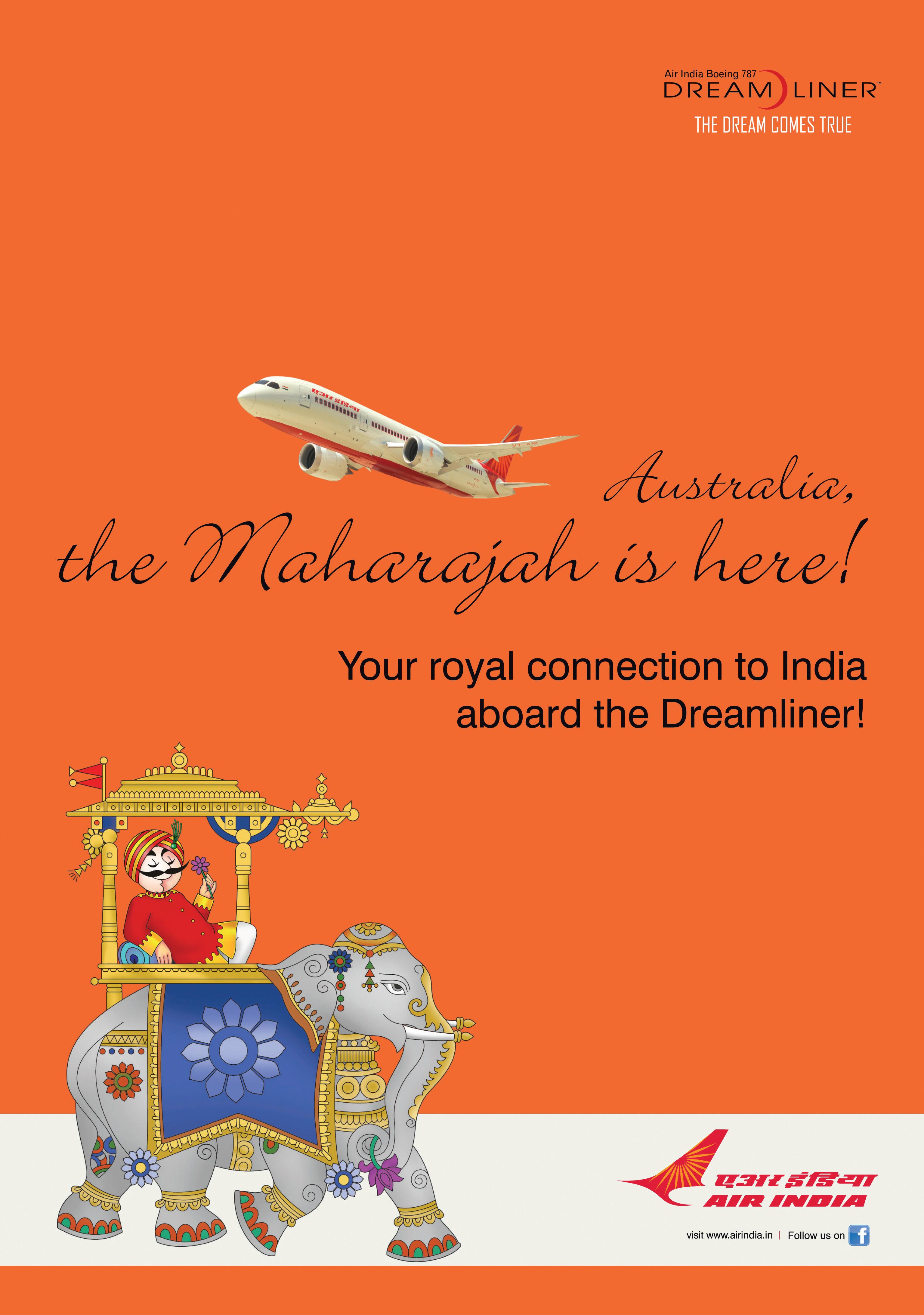














Prashant Dixit, Danielle
Althea, Sunil Gautam
ADVERTISING mANAGER
Vivek Trivedi 02 9262 1766
ADVERTISING
Proud member of:
Indian Link is a fortnightly newspaper published in English. No material, including advertisements designed by Indian Link, may be reproduced in part or in whole without the written consent of the editor. Opinions carried in Indian Link are those of the writers and not necessarily endorsed by Indian Link. All correspondence should be addressed to Indian Link
Level 24/44 Market St, Sydney 2000 or GPO Box 108, Sydney 2001
Ph: 02 9279-2004 Fax: 02 9279-2005 Email: info@indianlink.com.au

www.indianlink.com.au
We have heard arguments from both political camps, over the last nine months ever since elections were announced.
For a man who held all the cards and could actually nominate the date of the election, Kevin Rudd has seemed singularly unprepared for the rigours of the election campaign. At the pointy end of the ALP’s six years in power, it seems as though his campaign is more on a day-to-day basis, rather than a well-coordinated programme to present Labor’s vision to the public. To date, the Labor Party’s campaign appears to be more about arithmetic, rather than policies.
Penny Wong, the current Finance Minister who got most of the budget costing wrong in her six years on the job, is keen to show that the Coalition’s costings do not add up, and PM Rudd is more than keen to rant about these numbers. And while the public wants to
know more about the Coalition costings, there has been a dearth of vision by the ALP and Kevin Rudd about where they want Australia to go in the future. The challenge for the ALP campaign has been that the two biggest achievements under their tenure – the National Disability Insurance Scheme and the Better Schools program (Gonski review) – were initiated by ‘she who must not be named’. But the Rudd team has not been able to build on these credentials. Instead, Rudd’s achievements are locked into the global financial crisis management of 2008-2009, but even this record sounds scratchy if played long enough. The vision, if any, by PM Rudd and the Australian Labor Party has not been shared with the people of Australia. Most of the policy announcements have had a shelf life of less than 24 hours, rather than being built upon to stimulate the imagination of the public and to show true vision.
On the other hand, the Tony Abbott led Coalition has been pretty much on message. Their mantra of ‘you cannot afford another three years like the previous six under this government’ or ‘the circus has to end’ has resonated well with the public. They have had the unflinching support of various media
outlets from the Murdoch stable.
While the question remains about whether newspapers are reflecting, or leading public opinion, it is also true that there has been limited scrutiny of the Coalition’s policies. However, there has been plenty of scrutiny of Tony Abbott the man, be it his speedos or the analogy of ‘baddies vs. baddies,’ in relation to the civil war in Syria. From an Indian Australian point of view, and following the exclusive interview with Opposition Leader Tony Abbott in this issue, there seems to be a more positive message towards India and a promise to undertake discussions for assistance towards an India centre in Western Sydney. There is also a promise to ease restrictions on 457 visa applications. This is more than what has been promised to the Indian community by the Australian Labor Party.
As a community, local Indian Australians have had more positive messages from the Abbott-led Coalition government in Canberra.
It is time to ring in change, with the Coalition in government, and its leader Tony Abbott as the new Prime Minister of Australia.
Pawan Luthra is the 2012 Parliament of NSW Multicultural Journalist of the Year.

Mathias, Hamsa Venkat, Asha Chand, Noel G De Souza, Mohan Dhall, Petra O’Neill, Tracey Lennon, Kalyani Wakhare, Nancy Jade
There
Pure and powerful clairvoyance with supernatural gift from god. Surprising results and deeply effective success and a worldwide reputation. He can help you to solve your problems, bringing love back in your life for the better, to stop unwanted union, love, marriage, health care, successful in job and business, exam, court case, work, cure impotence become joyful. Remove nightmares, misfortune and family problems. let me destroy your problems before it destroys you!!!!
MobILe: 0405 515 401 or 0497 533 909



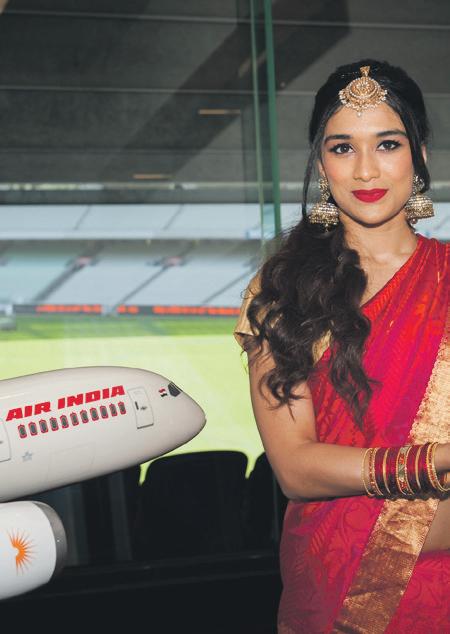

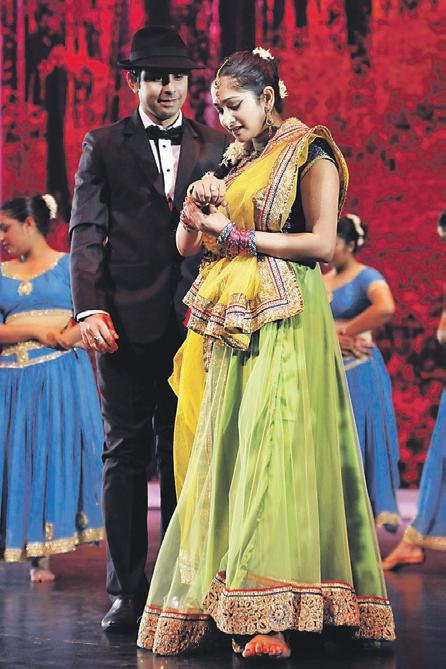
Put



sPiRiTUAL
Chinmaya Mission events
sun 15 sept 10am-11.30am
Ganesh chaturthi festival / Visarjan. crestwood community centre, Baulkham hills.
sat 28-sun 29 sept
family camp Managing the manager at Bundilla campsite, reilleys rd, winston hills.
details: Br Gopalji 02 8850 7400 or visit www.chinmaya.com.au
gopakuteeam
4th sun of every month 4pm-5.30pm
The Global organisation for divinity runs free spiritual education classes for children ageds 4-12 years, at crestwood community centre, crestwood drive, Baulkham hills. parents welcome to join in. details: Jayashree 02 9620 4676.
AWgP Balsanskar shala
Balsanskar shala teaches children Vedic slokas, Vedic maths, games, personality development, knowledge of great Indian personalities, and other aspects of Vedic culture. details: Gayatri pariwar parijan parag/ niyati wani 0421 403 852
Yagya
want Yagya, Satnarayan Katha, various Sanskara (Vivah, Janma Divas, Namkaran, Punsavan, Mundan, house warming, Bhumi poojan etc) at your
home? details: Gayatri pariwar parijan parag/niyati wani 0421 403 852
FUNdRAisER

EkAL Vidyalayas Charity
sun 15 sept 2pm-5pm
ekal women’s high tea at Mercure paramatta hotel. highlights include dance performance, special guest speakers, trivia game, lots of prizes and an open discussion on the goals and objectives of ekal women.
details: Vineeta Bansal 0425 371 413 or www.facebook.com/ekalwomen
MisC
Kavi Sammelan
sat 14 sept 4pm-6.30pm
Indian literary arts society of australia Inc (Ilasa) presents a kavi sammelan at epping leisure and learning centre, 1 chambers court epping. details: rekha rajvanshi 0403 116 301.
Hindi divas sun 15 sept
The australian hindi committee (ahc ) and IaBBV hindi school jointly present hindi Mela at Thornleigh west public school, Giblett ave, Thornleigh nsw 2120. This will include a student session with a short hindi skit, display of student work, poetry recitation competition, awards and light snacks followed by two short hindi plays Taj Mahal ka Tender and Mere Pati ki Shaadi There will be a children’s photo-essay
competition for students in yrs 6-12. The topic is “friendship: what it means to you”. children are to submit a collage (consisting of 2-5 images) and write an original short essay (125-200 words) based on this topic in hIndI. all entries are to be sent to hindi_school@ hotmail.com. Top three entries will receive a prize. details: Mala Mehta 0412 283 677.
Navratri Raas garba sat 5 Oct 6:30pm (sharp)-11pm
navratri cultural Group (under the auspices of shri shiva Mandir of Minto) announces action-packed raas and Garba. Michael wenden aquatic leisure centre, 62 cabramatta avenue, Miller (near liverpool) nsw 2168. details: Kanti and pratibha Gokani 02 9792 1422 (Bh).
sENiORs
1st & 3rd Tues of every month due to high demand sri om
foundation is starting another day of seniors’ care at Toongabbie community centre. The sessions will be from 10 am to 2 pm and are for seniors over 65 years. This is in addition to first and third wednesdays already operating at the same place. details: shweta sharma 0405 367 238.
Pravasi Bharatiya divas (Overseas indian day) Convention
sun-Tues Nov 10-12
The Ministry of overseas Indian affairs (Government of India) and the high commission of India, canberra jointly organise the 2013 regional pBd at sydney exhibition and convention centre. session themes include diaspora Issues and the Ministry of overseas Indian affairs; sharing of experiences; Trade and Investment services; Manufacturing; resources; Infrastructure; skills and education; women inBusiness; youth education; Media and Indian languages. details: www.pbdsydney2013.com.au


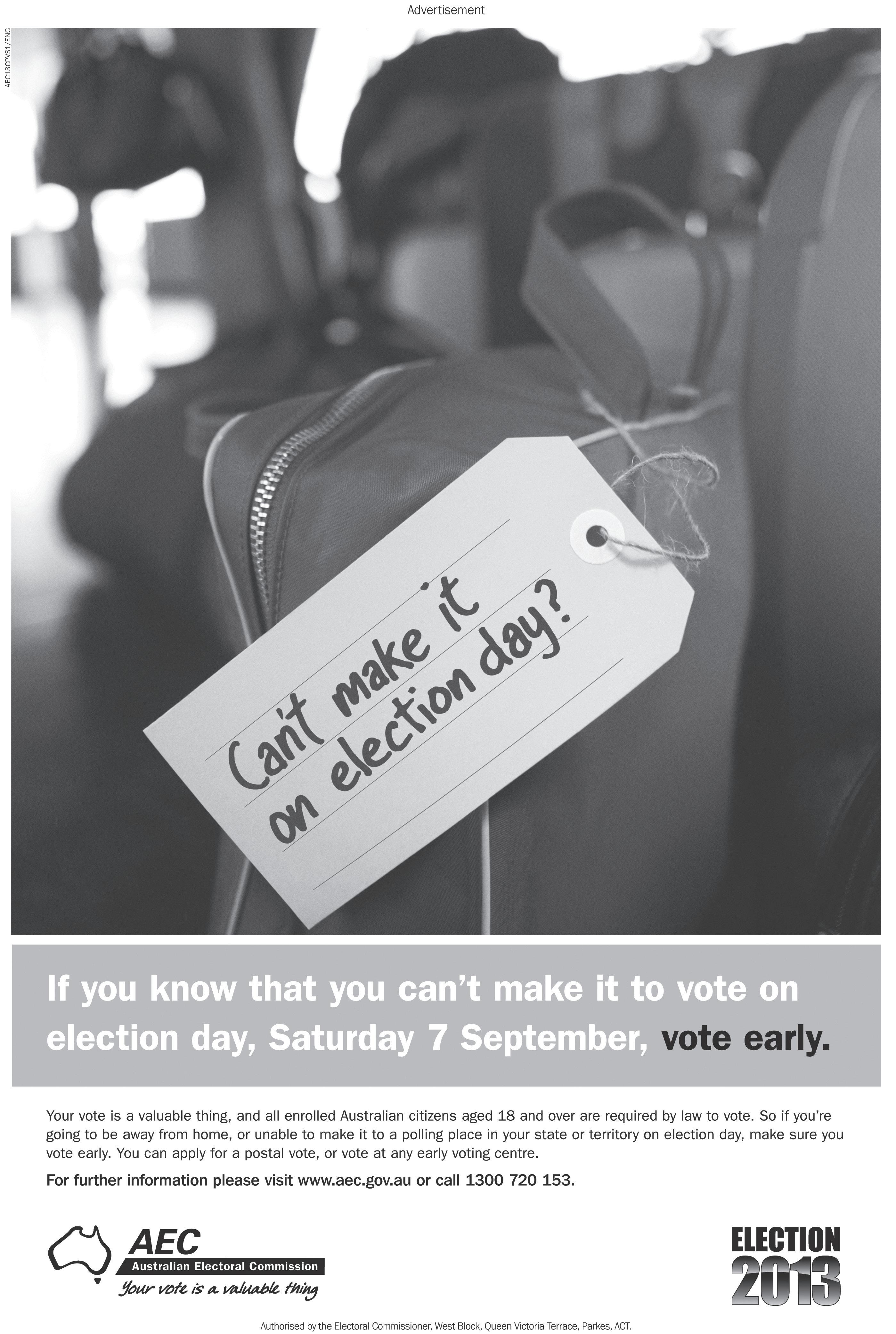


I deplore the fact that the current national government has demonised people coming to Australia on 457 visas
The people who come to Australia to work and pay taxes from day one are not stealing Aussie jobs, they are building our country. We should be very welcoming to people who are prepared to come here for short time, or for a long time, to work and pay taxes and join the Australian team, which is what people on 457 visas abundantly do
previously, and I think we’ve had a good chance over the last few weeks to reinforce those with the Australian people.
PL: Did you expect this kind of a negative campaign?
With just a few days to go before the 2013 Federal Election, Indian Link wrote to the Australian Labor Party and the Coalition Party to request interviews with their leaders. On behalf of the community, we wanted a better understanding of their overall polices, with particular reference to the ones relating to India, as well as their plans for the Indian Australian community.

The Coalition responded within minutes of receiving our request, and Opposition Leader Tony Abbott agreed to an interview that aired on Indian Link Radio recently.
However, we were not as fortunate with Prime Minister Kevin Rudd. In spite of a number of emails and text messages to the Prime Minister’s senior media adviser, at the time of going to press, Mr Rudd’s office is still to take up this offer.
With the Coalition stretching its lead in the polls and pundits anointing him as the next Prime Minister of Australia, Mr Abbott was friendly and relaxed as he spoke about Indo-Australian issues. Here are excerpts from the interview.
Pawan Luthra (PL): Welcome to Indian Link, Mr Abbott. We are just a few days out from the election; how do you feel?
Tony Abbott (TA): I feel that this election can still go either way. While it’s been a good campaign for the Coalition, and a pretty scrappy campaign from the government, Mr Rudd is a clever politician. The Labor Party has unleashed a ferocious negative campaign. They think that negative advertising works, so we can’t take the outcome for granted. Nevertheless, the Coalition has a strong united party ready to serve, and we’ve had the same clear policy position as
TA: I always thought that a desperate Labor Party would resort to scare tactics. Mr Rudd made a big, big, big play, when he returned to the Prime Ministership of being positive when he said, ‘with all my heart I want to end the negativity’ and I’m just a bit disappointed that he seems to have broken his own promise in that aspect.
PL: Mr Abbott, I’d like to turn your attention to the India-Australia relationship. The elephant in the room is the sale of uranium to India. While this was agreed on by the Labor Party, sadly the process remains stalled with little action forthcoming. If elected, how will the Coalition government handle this situation?
TA: We want it to happen. India is a democracy that enjoys the rule of law, and is a country with which we have good relations. Plainly, if Australia sells uranium to Russia or elsewhere, we ought to be prepared to sell uranium, under appropriate safeguards, to India. It seems like the current government has singled India out for punishment even though India’s role in the international community is a very stable one. I’m very keen to try to ensure that uranium sales to India are resumed as soon as possible.
Pawan, I will want to know exactly what the obstacles to these sales would be, exactly why there seems to have been a bit of dragging of the chain by perhaps the officials, rather than others. And if it’s some obstacle of law on the path of Australian officialdom that’s the problem I’d want to resolve.
PL: That’s good to hear, because this is one of the major issues holding back a more conducive relationship between the two countries.
TA: And we shouldn’t make it out to look like we are singling out
India for some kind of criticism. India is a democracy under the rule of law, it’s been a very constructive contributor to the international community. It’s one of the coming superpowers of this century and it’s important that we acknowledge that and work as well as we can with India and the Indian government.
PL: Leading on from there, the NSW Premier Barry O’Farrell made it very clear at the start of his term that he would be visiting India and China every year; would you be looking at a similar agenda?
TA: Yes I would, Pawan. I think that it’s very important that Australia maintains the best possible relations with all its friends. Over the years we’ve obviously had outstanding relations with Washington and London, but we should never allow our strong friendship with our traditional friends and allies to divert us from an even stronger friendship with the emerging powers of our region, and India is very much in the forefront there. So I think it’s important that Australia acknowledges the fact that as time goes by, India is going to count for more and more in the world. Particularly given India’s profound commitment to democracy in the rule of law, it’s very important to build an even stronger relationship with India. India is the emerging democratic super power of Asia and I want to stress that. That’s why it’s very important that Australian leaders spend more time in India, or on India in the future, than we have in the past.
PL: Former Prime Minister John Howard made his first overseas visit to Indonesia, reflecting his particular change in foreign policy. If elected, would India be high on your list of countries to visit?
TA: It would be. I expect Indonesia to be my first significant overseas visit… I’m certainly not getting ahead of myself there, Pawan, but I would be surprised and disappointed if within a matter of months there hadn’t been a trip to India.
PL: On another issue, the changes to the 457 visa program have not only made a deep impact on a number of Indian professionals here, they have not played out well in India either. Unfortunately it has added to the perception that Australia is ‘racist,’ triggered by the student attacks in the past. If elected, what would you do to counter this perception?
TA: I acknowledge that the violence against Indian students, particularly in Victoria a few years ago, was a real blot on our national copy book and the then Victorian government was far too slow to respond to what was, at the time, racially motivated violence. At the time I deplored these attacks, I think it’s profoundly out of character for Australians to do that. I think Indians in Australia appreciate that Australians are very welcoming people, that we are a very welcoming, free and fair country. Yes, but it happened, it shouldn’t have happened, governments at all levels were slow to respond but eventually we did get on top of it and now it’s not happening. Equally, I deplore the fact that the current national government has demonised people coming to Australia on 457 visas. I’ve been saying repeatedly since this campaign began, the people who come to Australia to work and pay taxes from day one, are not stealing Aussie jobs, they are building our country. We should be very welcoming to people who are prepared to come here for a short time, or for a long time, to work and pay taxes and join the Australian team, which is what people on 457 visas abundantly do.
PL: So will you look at making some changes?
TA: Oh absolutely! We want 457 visas not just to be a component of our immigration program, we want them to be a very possibly, the mainstay of our immigration program. Because the tradition in this country is that we extend the hand of welcome to everyone who wants to come here and join the team, and come to work and
pay taxes from day one.
PL: Your recently released education policy promised to improve the take-up of Hindi in Australian schools. While this is a terrific start, are there any plans to extend this to higher education at University levels?
TA: Thank you. I think we had better take one step at a time, Pawan. Hindi is one of the most widely spoken languages in the world and it’s appropriate that our study of Hindi be expanded, rather than contracted. This is one of the problems of modern Australia; because so many people speak English we become a bit linguistically lazy and we shouldn’t expect that the world will speak to us in our language. We should be ready to speak to the world in its language. That’s why the study of Hindi, the study of Japanese, Bahasa or Korean, is important. Back in the 1960s about 40% of Australia’s school leavers had studied a foreign language. Now it’s less than 10% and this is an indictment of our system, and it has got to be fixed.
PL: We know you travelled to India as a youth and worked at a Jesuit mission in Bihar, but what are your recent links?
TA: I regret to say I haven’t been to India since this time.
PL: But you’re promising to visit post September 7, if elected as Prime Minister?
TA: Absolutely! I had hopes to go this year as Opposition Leader, but unfortunately the pressure of the elections intervened. There was a clash between the proposed dates for a visit by me and a visit by an Australian government minister, so in the end the ministerial visit went ahead, not the leader of the opposition’s visit. But this is a mission on which I want to break the ice very, very soon. I spent some fascinating months in India back in 1981, on my way from Australia to England to take up a Rhodes scholarship at Oxford. I spent three fascinating months in India, mostly in the Bihar province, in the company of the Jesuits. I have been fascinated by India ever since. I thought back
then, that India was a country with enormous potential. It was in those days a bit of a sleeping giant, but the giant has well and truly awoken and it’s important that Australia makes the most of that potential. And it’s important that Australia acknowledges India’s prospects of future success.
PL: The Indian community in the Western suburbs has been asking the government to collaborate in setting up an India House. If elected, will you assist them in this endeavour?
TA: It’s a very worthy aspiration. I don’t want to give cast iron guarantees, because I’m not familiar with the details of the proposal, but I would be only too happy, either myself, my staff, or some of my colleagues, to sit down with members of the community to explore the proposal and do what we can to help.


I will want to know exactly what the obstacles to these sales (uranium) would be, exactly why there seems to have been a bit of dragging of the chain by perhaps the officials, rather than others

PL: An Indian personality, alive or dead, who has made an impression on you?
TA: Mohandas K Gandhi, because he managed to lead his people in a great struggle, and he did what he could to ensure that the struggle was peaceful.
PL: Your favourite Indian restaurant in Sydney?
TA: The Indian Times, at Bantry Bay Road in Frenchs Forest is the restaurant I most frequently take advantage of, it is my local. Probably more often takeaway rather than a sit-down meal, but they do a very good job there and I can thoroughly recommend them.
PL: Your favourite order at an Indian restaurant?
TA: Lamb rogan josh, chicken tikka, beef Bombay and there’s a prawn masala there which is very good.
PL: Ever cooked something Indian?
TA: I used to cook a reasonable curry, but these days my wife tries to keep me out of the kitchen.
PL: An Indian book you have read that’s made an impression?
TA: I haven’t had enough time to read lately. There has been an extraordinary proliferation of Indian literature in English over the last couple of decades, and I’m probably not as up with it as I should be, so I’ll probably pass on this question, but I did have a go at Vikram Seth’s, A Suitable Boy, and I must confess I didn’t really like it much. That’s probably a comment on me, on my busy work, but I confess I didn’t get through it.
PL: Seen any Indian films?
TA: Again, when I was in India I watched some Bollywood films. They weren’t really my type, but like everyone else, I watched Slumdog Millionaire and I loved it.
PL: An Indian word you know?
TA: Well ‘khaki,’ as I understand it, is an English word derived from India.
PL: An outstanding memory from your time spent in India?
TA: I guess apart from the colours, the sounds, the extraordinary work of the Jesuits, probably my strongest memory is
just the readiness of the ordinary Indian to engage with me. You couldn’t walk 10 yards without being basically hailed and talked to, and maybe it was because in those days, a white face in the street was a rare thing. Maybe it was because they just wanted to practise their English on me, but I certainly had an amazing time there.
PL: Or maybe they saw a fair dinkum fellow in you over there...
TA: (Laughing) Well, I’d like to think that I was a fair dinkum fellow but I guess at that point in time they may not have known that.
PL: India – Australia relationship future?
TA: Well look, I want to do everything I reasonably can to build a better relationship between Australia and India because this will be good for India, but it will be very, very good for Australia.
PL: Your message for the Indian Australian community?
TA: It’s a simple one, and it’s much the same message that I would give to every Australian at this time. We must change the government because we can’t afford another three years like the last six. I lead the coalition and this is what we’ll do; we’ll build a stronger economy so that everyone will get ahead. We’ll scrap the carbon tax and we’ll end the waste, we’ll stop the boats and we’ll build the roads of the 21st century. But in order to do all this, we need a stable majority government and that’s what I will bring with me if elected.


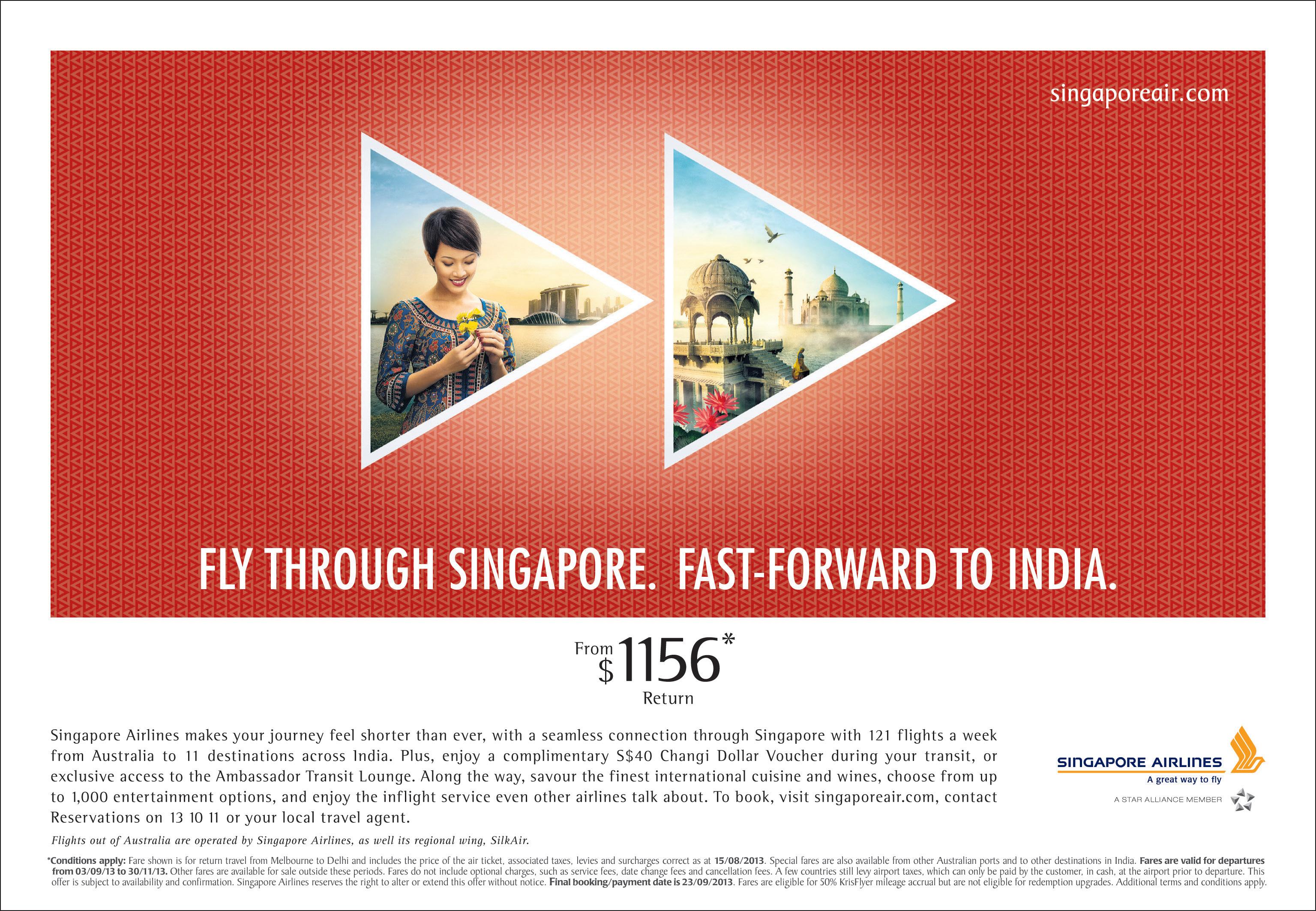

the World Cup 2015? What prompted this comment?
Aceremony to launch the 11th Cricket World Cup was held in Melbourne recently, with international cricket legend Kapil Dev attending as a special guest of the ICC and Cricket Australia. The Cricket World Cup will be jointly hosted by Australia and New Zealand from February 14 to March 29, 2015. The Prime Ministers of Australia and New Zealand, ICC President Alan Isaac and former cricketers were present during the launch.
14 teams will be seen in action across 14 venues, and Melbourne will host the finals.
A living legend he may be, but that does not stop Kapil Dev from being one of the most amicable and interesting people to whom I have spoken. Add to this personable mix a good sense of humour, and talking to Kapil Dev is a real delight! When the phone call came to catch up with him over breakfast, I did not hesitate to drag myself off my sick bed and headed towards the Grand Hyatt where Kapil was staying during his visit to Melbourne. He was due to fly back to India that afternoon to continue with his numerous commitments and pursue his all-consuming passion for golf. A warm welcome later, we found ourselves ensconced with him in a trendy café on Federation Square tucking into a hearty soup and conversation.
Preeti Jabbal (PJ): What was the buzz at the World Cup 2015 launch that you recently attended?

Kapil Dev (KD): The main buzz around the launch was because people were happy that the finals were to take place in Melbourne. It’s wonderful to see that the preparations have started almost 15 months in advance. In our part of the world this does not happen as we tend to leave things to the last minute. A good organisation starts planning much in advance, on top of that if the Prime Minister and the government of a country gets involved, then you do not come across many hurdles.
PJ: Hopefully! What will be your role at the World Cup 2015? Will you be involved, and in which capacity?
KD: It’s a bit too early to predict
that, as I said to you before, we don’t plan this early (laughing), but I think I will be on television, most probably commenting on the World Cup either from here or from the studio in India, I am not sure yet.
PJ: India did not perform well at the World Cup in Australia in 1992; what are their chances of winning this time, under similar conditions?
KD: I think the current Indian team is looking much better with newcomers and youngsters in the team who are shaping up quite well. It is a different team without established players like Sachin Tendulkar, Yuvraj, Sehwag or Harbhajan, as none of them have played in the past six months. If the team has won the Champion’s trophy despite not having all these good players, then it is safe to say they are ready. My concern is mainly about injuries not performance.
PJ: Amongst the newcomers in the current Indian team, do you see someone as a potential Tendulkar or Sehwag?
KD: I would never like to compare anyone with such great cricketers who have done service to the country; however Shikhar Dhawan has shown tremendous potential and talent, Ravindra Jadeja is another good one while Mahendra Singh Dhoni is the backbone of the team. Even
Ravichandran Ashwin has now gained more experience and is bowling better than he did when he played last time in Australia. I feel that the Indian team is well balanced, at this stage; I just hope they should not have any major injuries.
PJ: What is your opinion of DRS (Decision Review System)? Should it be mandatory to use in the World Cup, or restricted to just the umpires, or open to players?
KD: That is entirely up to ICC (International Cricket Council), if they feel that every player should feel comfortable with the decision, then why not? The technology is not always reliable and accurate, but if people are happy with the majority of the decisions, I do not see any problem with DRS. The Cricketing Committee is smart enough to decide whether DRS should be available to umpires or players or both, and whatever applies to the World Cup should be used throughout the year to ensure consistency. This system should not be limited to World Cups only; every tournament or Test series or One Day International and every cricket board who can afford it, should try to apply DRS. Consistency will ensure improvement.
PJ: You have been quoted saying that you have a strong belief that India will win
KD: If the World Cup was to take place today I could confidently say that India would have a 70% chance of winning, but 15 months is a long time and things could change. Lots of new players can come up in that time and circumstances can change.
PJ: What has led to such confidence in the Indian team?
KD: The young boys who have come into the Indian team have lifted the game. I think once you start winning and believing in yourself, it builds your confidence.
Jadeja, Virat Kohli, Dhoni are all are outstanding players. The only weak link in the Indian team is their bowling. If they can maintain good bowling standards and play well as a team, they have more chances to win than any other team.
PJ: What about the Australian team? What do you think of their new talents like Ashton Agar?
KD: I have never seen such an outstanding performance as Agar’s first test! For someone to play that well on his debut is exceptional, and it was unfortunate that he could not make a century. I have no doubt that these young boys will come out and make their mark, as there is a lot of talent in the Australian team; but the question is whether they can use it at the right time. At this stage they do not look like a strong team as they are lacking in certain areas. I think they need guidance and leadership to prepare them for that win.
PJ: What do you think will help them improve their performance?
KD: Self-belief! You need a captain who takes ownership and starts playing from the front. The Australian captain is the most exciting cricketer in the world, however he seems to be going through a bad phase with health issues. If the captain is replaced, the team gets rattled. I hope the Australian captain overcomes his back problems and is able to develop the team well in advance. This is their territory and they know the conditions better than anyone else.
PJ: What is your opinion on the recent allegations that have affected the IPL (Indian Premier League)?
KD: The IPL has given a lot of fun, happiness and entertainment to the cricketing world, however the game has been marred with the greed of certain individuals. It is wrong and there is no need
The Cricketing Committee is smart enough to decide whether DRS should be available to umpires or players or both, and whatever applies to the World Cup should be used throughout the year, to ensure consistency
The Australian captain is the most exciting cricketer in the world, however he seems to be going through a bad phase with health issues
now or ever to do anything like that, and everyone cannot be tarred with the same brush. The ownership now lies on the teams, senior players and authorities to keep a strict eye on the players to ensure that no-one spoils the name of the game.
PJ: Speaking of games, how is your golf going?
KD: (Brightening up) Not too bad, I just don’t get enough time to play. I enjoy the game and I play every weekend, and that is why I am flying back so I do not miss my weekend game.
PJ: You could play here… Melbourne has some of the best golf courses in the world.
KD: It is winter here and not many people play golf in this weather. I have some other commitments as well and need to return; however I would love to be able to play here someday. Maybe next time!



On the morning of Friday, August 30, the city of Sydney welcomed India’s flag-carrier Air India to Australia following the landing of its inaugural Dreamliner flight at Kingsford Smith International Airport.
The touchdown of the Dreamliner passenger flight signified the return of direct services from Delhi to Sydney with Air India.
“Sydney airport is very pleased to welcome Air India back to Sydney after a 22-year absence,” said Sydney Airport CEO Kerrie Mather. “This is a very special day for Sydney airport and our city”.
Air India’s new service AI 311 will be operating daily on a triangular route connecting both Sydney and Melbourne. On four days the flight will operate on the Sydney-Melbourne-Delhi route, and on the remaining three days the Melbourne-Sydney-Delhi sector.
With a shortened flying time of twelve and a half hours, these flights will also provide a major boost to trade, investment and tourist traffic between India and Australia.
With the trade and tourism relationship between India and Australia expected to grow by 44 per cent in the next five years, the introduction of Air India’s direct flight services will benefit both economies.
According to Destination NSW estimations, Air India’s new daily Dreamliner service will add more than 46,000 seats per year into Sydney, which could contribute more than $30 million into the NSW economy per year.
Mr Rohit Nandan, Chairman and Managing Director of Air India arrived in Sydney on board the first Dreamliner flight from Delhi on Friday morning, along with 200 other passengers.
Mr Nandan said that the relationship between the two nations has grown tremendously in the last 16 years and that the flights will be a major factor in strengthening this relationship even more.
“The flight is being looked at by both the Australian and the Indian travel market with a lot of enthusiasm and hope as it will not only serve the Indian diaspora in Australia and other countries like New Zealand and the Fiji islands, but also the student community from India to Australia and holiday travellers between India and Australia,” he said.
Sydney itself is home to 217,000 people of Indian descent. It has Australia’s highest number of residents with Indian ancestry, adding to the strong demand for direct services between Sydney and India.
According to Mr Nandan, NSW Premier Barry O’Farrell was very active in pursuing Air India to first land in Sydney. He said he was impressed by the proactive approach of the NSW government.
Mr Nandan also thanked Sydney Airport for their patience and claimed the process of getting the Dreamliner to Sydney has been a ‘rollercoaster ride’.
“They (Sydney Airport) have been a constant partner and great help over the last three years,” he said.
Speaking at a welcome ceremony at the Sydney airport, Destination NSW CEO Sandra Chipchase observed, “Air India’s decision to schedule four direct flights per week to Sydney recognises NSW’s status as Australia’s first premier State for international tourism, visitation and visitor expenditure,” she said.
“To year-end March 2013, more than 71,000 visitors from India travelled to NSW, spending more than 3 million nights – with most visitors coming to see family and friends, followed by holiday makers and business travellers,” she added.
“India is Australia’s largest unserved market. Last year, around 140,000 passengers travelled between Delhi and Sydney via Asian hubs,” stated Ms Chipchase.
Delhi International Airport CEO, I Prabhakara Rao, said, “The Sydney service has been long awaited and with this, we have connected not just two great cities, but two great continents”.
“Sydney has continuously ranked amongst our top five potential destinations, based on passenger demand, that needed connectivity. With the advent
of a non-stop service to Sydney aboard Air India’s Dreamliner, we are convinced that the market will only grow,” he added.
Creating just as much buzz as the return of Air India, was the new Dreamliner aircraft, seen for the first time in Australian skies. Air India is one of the first airlines to introduce the Boeing 787 aircraft, or ‘The Dreamliner’.
The Dreamliner is “the most modern, advanced and sophisticated plane in the world at the moment,” Air India’s Mr Nandan said.
It has a smaller noise footprint and features more comfortable cabins with larger windows and lie flat business class seats.
The airplane is also equipped with a system that senses turbulence and commands wing control to counter it, which means passengers can enjoy a smoother flight.
With 15% lower fuel consumption per passenger than any other aircraft off the same size, the Dreamliner is also very fuel-efficient.
The Dreamliner has the optimal size and range that allowed Air India to open up a new market in Sydney and gave them a ‘first mover’ advantage due to its lower fuel and operating costs.
Air India plans to expand its network even further in the coming months by connecting Delhi to Rome, Milan and Moscow with direct flights using the brand new Dreamliner aircraft.
The local Indian community has welcomed the return of their national carrier with much pride. At a welcome event managed by Multicall Connexions, a Sydneybased multicultural marketing agency, the mood was upbeat as community members expressed enthusiasm to try out the product.


The general feel was that, if the service is good, the uptake will be favourable. (First-time Australia traveller 63-year-old Manjeet Kaur raved about the service on the inaugural flight. She flew from Delhi to Melbourne to visit her son).
Air India is also looking to attract other travellers such as those flying from London into Australia. Boasting the shortest
connection between London and Sydney, it is hoping to get a fair share of the nearly 450,000 passengers that frequent this sector.
Meanwhile, Sydney hotels are preparing for an influx of Indian travellers. Leading the way is Accor, who were the first hotel group to introduce “Optimum Service Standards” for Indian inbound travellers. Currently, 12 Accor hotels have been accredited for Indian Optimum Service Standards in Sydney, the Blue Mountains, Melbourne, Gold Coast, Brisbane and Cairns.
“Australian operators have in the past found dealing with the Indian market quite a challenge and that’s why so few hotels have embraced the market,” says Greg Brady, the Mercure Sydney Central general manager, who first went to India five years ago as a “pioneer”.
“The key is building relationships with Indian tour operators and then ensuring the hotel suits the needs of Indian travellers. That means getting the food right, understanding the Indian culture and appreciating the specific needs of Indian travellers.
“The Indian market wants quality product and service. Translating materials into their local language isn’t as imperative as it is for the China market, but getting the food and culture side of hospitality correct is really important”.
“We’ve invested considerably in developing the market. We have our own Indian chef who cooks exclusively for Indian groups. We have the Curry Leaf Indian restaurant and we have a range of Indian items – such as poha, upma, marsala chai – on our breakfast buffet. Food is a really important ingredient in the Indian travel experience”.
Another hotel that is seeking to build the Indian inbound business is the Fairmont Resort MGallery in the Blue Mountains. This hotel used to be “honeymoon central” for the Indian market in the 1990s and early 2000s, and with Accor now operating the hotel, it will once again retarget the Indian honeymoon, incentive and leisure markets.
Facilities offered under the Indian Optimum Service Standards program include: Indian dishes on the breakfast, restaurant and room service menus; hotel
welcome kits in Hindi; Indian adaptor plugs; Indian television channels and newspapers; and Indian snacks and drinks available in the minibar.
It will be interesting to see if the airline can indeed fill up seats, but country manager Ravi Bodade is quietly confident that the relaunch will be successful.
Air India is offering special attractive promotional fares on the Sydney to Delhi route in both directions, which will be available for a limited period. Details are on the Air India website www. airindia.in
With
reports by
Vivek Trivedi and Rajni Anand LuthraAccording to Destination NSW estimations, Air India’s new daily Dreamliner service will add more than 46,000 seats per year into Sydney, which could contribute more than $30 million into the NSW economy per year


The Dreamliner has the optimal size and range that allowed Air India to open up a new market in Sydney and gave them a ‘first mover’ advantage due to its lower fuel and operating costs
 Flight AI 311 touches down at Sydney’s Kingsford Smith International Airport
A warm Sydney welcome (inset) and a grand MCG one
xdcgvbscg
Flight AI 311 touches down at Sydney’s Kingsford Smith International Airport
A warm Sydney welcome (inset) and a grand MCG one
xdcgvbscg
Great opportunity exists in regional NSW $125000



Gloria Jeans coffees Armidale established for 4 years

Consistent turnover, with 2.5 years remaining on lease


EBITDA $80000 with room to grow.
Motivated owners, priced to sell $125000 + SAV ONO Call Matt 0410 532 033
I am committed to delivering fairer parking for Liverpool’s residents and I am pleased to share with you that Liverpool City Council has secured funding for an $11 million car park in the City Centre under the NSW Government’s Local Infrastructure Scheme.
I am also pleased to announce that all day parking is now available on Levels 1 and 2 of the Northumberland Street Car Park, Monday to Friday for $7 per day.
Council will implement a range of changes throughout the year which include turning off the parking meters on weekends, providing 15 minute free parking and new discounts at Warren Serviceway Car Park.
On behalf of Council, I would like to thank the Member for Menai, Melanie Gibbons for championing this for me and ensuring Council received this vital grant.
Ned Mannoun Liverpool City Mayor
Meg Wilkinson’s passion for textiles and clothing began with art. She completed a Fine Arts degree majoring in jewellery and metal smithing at the University of Tasmania.
“I think I was always a bit of a frustrated fashion designer,” laughs Meg.
After making jewellery for many years she went back to TAFE to study fashion and costume design and developed the idea of starting an ethical clothing business in India.


Meg’s first trip to India was 15 years ago. “I landed at 2am and breathed in the Delhi fragrance,” says Meg. “My heart just opened and I knew I’d come home”.
What drives an Australian to start a quest to help people on the other side of the world? A passion for textiles and hand-embroidery, a desire to preserve traditional skills and the perseverance to produce clothing that directly benefits the workers.

“I met a lot of people who go to Pushkar to get clothes made,” said Meg, “because making it in Australia is too expensive”.
While working for The Body Shop, Meg was inspired by their “Trade Not Aid” program, which advocates going into developing countries and buying products from the source. Meg wanted to buy directly from the artists and pay them a little above the normal wage. She saw the difference it made to their lives and village infrastructure.
“It didn’t cost much more but made a huge difference,” she says.
A “major life shift” enabled Meg to resume study and travel to India. While staying in a guesthouse in Pushkar she fell in love with its manager, Savar Ram. She told him about her business idea and they started Beej together in 2008.
Beej is the Hindi word for seed, and with this enterprise Meg believes she is “sewing the seeds of change”.
Beej employs workers from a small village about 20 kms outside Pushkar. The initial set up was not without its difficulties.
“I wanted to create clothing that used traditional skills with a modern edge and I was aiming at women 30 and over,” says Meg. “I
thought the local women would be fine to use traditional skills so I was shocked to learn that those skills were dying out because machine embroidery was replacing traditional hand embroidery”.
Meg had to train the women to create the embroidery for her designs. Once the training was underway, many of the women’s grandmothers shared their memories about when they practised the craft.
“It was difficult work for the women at first,” says Meg. “They are used to hard work (as the village is a farming community), but now they can have a break and do work that’s more social and less physical”.
Meg keeps her collections and runs small, trying to be as sustainable as possible. She points out that the women aren’t available all year because of farm work, so they can work for Beej as it suits them. The women can earn extra money as Beej pays Rs 200 a day minimum.
“Most women make Rs 70 on farms per day and I pay per piece rather than per day as an incentive. No one earns under 200 rupees and they are not tied to the job”.
Her practical approach is balanced with a desire to educate Australians about fair trade products. Her aim is to “empower people who have nothing and people who have everything”. She cites the recent building collapse in Bangladesh as an example of why there is a need for greater
scrutiny of manufacturing practises.
“Ethical fashion is talked about, but people are not acting on it,” says Meg.
She points out that consumers need to be wary of labelling and how fair trade goods are produced. Fair trade is a general term and a brand name and buyers need to be aware that “an item is Fair trade cotton only if it’s bought from that particular company”.
The same problem exists with the label “organic.” Cotton manufacturing using child labour has been reported in six of the seven top countries that produce organic cotton. Beej has taken a considered approach to producing ethical clothing. The bright and beautiful clothing is made from surplus cotton and low chemical dyes. “We wanted to used Khadi hand-woven cotton, but couldn’t get enough so we buy from local cotton manufacturers who store an excess of cotton that would otherwise go to waste,” says Meg. “Our clothes are dyed with low impact chemical dyes that don’t run and we use Rangoli threads made in India”.
Beej aims to use “upcycled” material including Gujarat embroidery and employs local artisans.

In five years Beej has shown steady growth. They sell online and at selected Festivals and markets including Woodford, Music Festival, WOMAD,
designer markets like Brisbane’s Finders Keepers and the Qld Fair Trade market. Meg wants to sell clothes “where people are excited about something that has a story and are giving back to the community. I want them to come to our stall and hear the background, knowing they’ve
made a difference and started on the path of buying ethical products and supporting ethical trade. I want people to think”.
She concludes, “If you have a dream and follow it with a pure intention everything falls into place. It’s totally possible”.



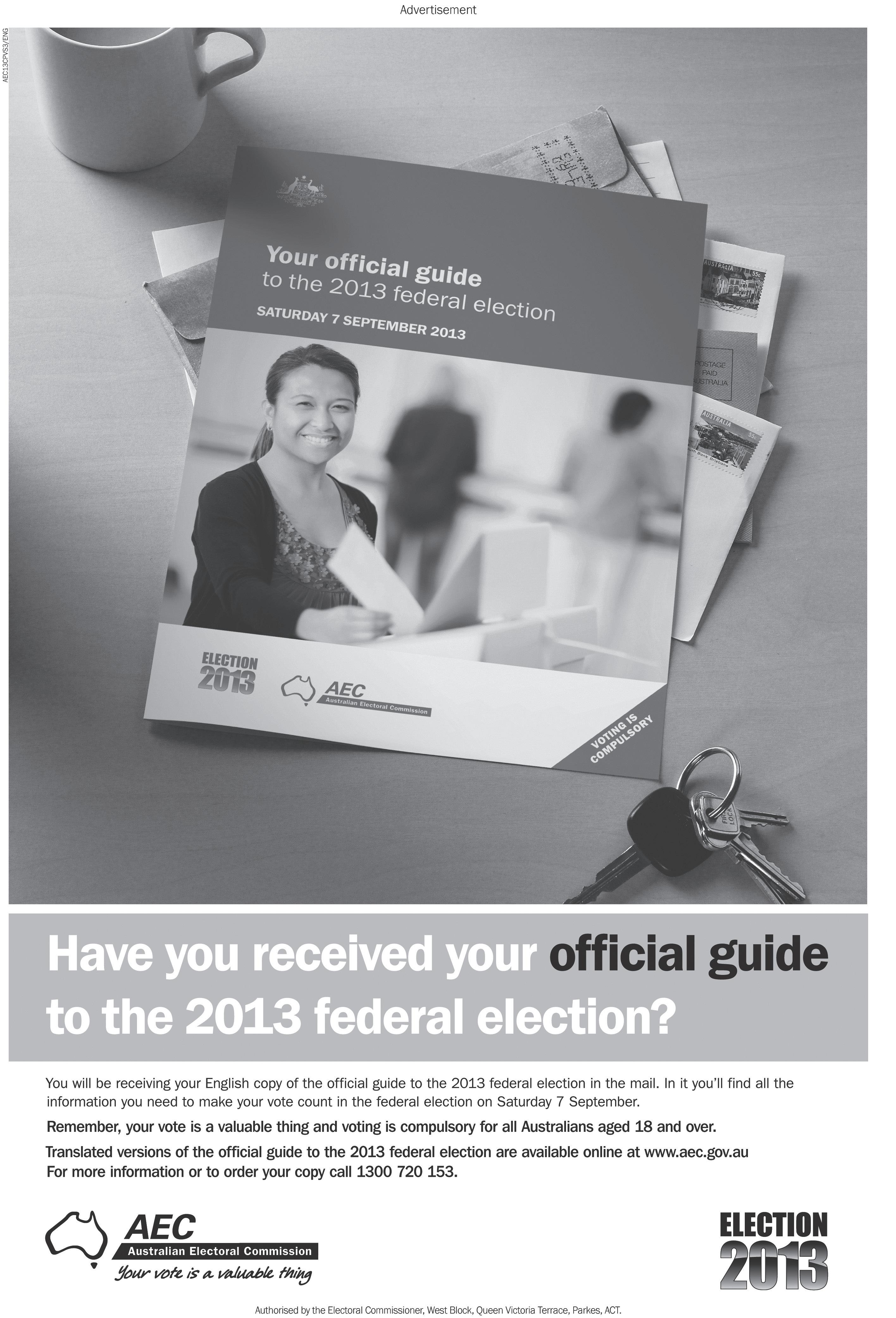



In poignant moments, such as when Dev gently clasps the anklet on to Paro’s feet on his return from London, or in the silent suffering of Chandramukhi facing rejection, the feelings of both love and loss were recreated simply and beautifully
There is perhaps no human that lives that hasn’t experienced the emotions of love and loss.
The story of Devdas has intrigued artists throughout time and it is indeed a challenge to present something that every single human can relate to but at the same time something where each human experience may be different. This is precisely what attracted Ruchi Sanghi to the story of Devdas. Ruchi, who helms the premier Kathak outfit in Sydney, says, “I thought it would be a fascinating challenge as director and choreographer to present the already known characters in my own special way”.
And in her characteristically inimitable style, Ruchi accomplished this admirably in her latest production Devdas The Musical. In poignant moments, such as when Dev gently clasps the anklet on to Paro’s feet on his return from London, or in the silent suffering of Chandramukhi
facing rejection, the feelings of both love and loss were recreated simply and beautifully.
The dancers stole the show with their synchronised movement, varying formations and graceful execution of different styles of dancing. Be it the peppy folk number celebrating Holi in colourful pinks and greens, or the dance of seduction in golden hues, the dance of anger and passion in tones of red, or the dance of death and separation in streams of black - the mood of the moment was effectively captured.
In the intense portrayal of emotions - the enchanting altercation between little Paro and Devdas as they play with their friends, the arrogance of little Chadramukhi as she preens herself at her debut, and the loud argument Devdas has with his mother are highlighted by the clicking dandiya sticks in the background, the dancers excelled and truly lived their roles.

The cast Ila Srivastava, Ankita Bhatia, Anika Misra, Hirali Dhawan, Nicki Kathuria, Nikhil Anand, Rahul Patel, Divya Saksena, Pavithra Hathi, Divyansha Kumar, Jhanvi Rao, Bhavya Nanchahal and Pratyush, under the able guidance of Viral Hathi and the theatrical adaptation
by Anu Shivram, brought to life the story and the characters. The musicians contributed just as effectively. With a sense of mystery and magic, Aparna Nagashayana sang not merely the story of Devdas but the song of every human soul, its love, longing and loss.
Sanjay Ramaswamy was vibrant with his resonant voice and through serene aalaps, crisp swaras and lilting lyrics, breathed life and soul into the performance. Maharshi Raval (rhythm arrangement), Peter Schaefer (sitarist), Shaun Premnath (keyboard and orchestration), Suraj Ravikumar (rhythm pad) and Dhatri Bellave, Soumya Ravikumar, Tharunaya Nevada and Pranita Prasad on chorus, embellished every movement and nuance with their skilful artistry. With period epics, it is hard to create the mood of a time and place beyond the present. The team of artists, led by Sagar Agashe, did this with panache as they effortlessly transported the audience to another world, one of courtesans and class distinction. The rich backdrops of hanging silk and tapestry, the dazzling costumes, the intricate jewellery, subtle touches like the swing of creepers which metaphorically reflected the mood of the characters, including their joy and sorrow, all added to weave its own special magic.
In their brief interludes, some ‘guests’ on stage impressed with their cameos. The flamenco dancers representing a scene where Devdas meets with the gypsies in his travels, were so full of life and got the audience’s feet tapping. Another moment that stands imprinted in the minds of the audience is the qawwali by two young boys Lalit and Mayank, with their powerful and gifted

voices. They enveloped the audience with the mysticism and divinity of the Sufi traditions, appropriately accompanying the transformation of Chandramukhi from selfish to selfless in the foreground.
As the lyrics echoed at the climax of the musical, Shashwath bas sannate… meaning, ‘the only thing eternal is silence’, the visual treat that was Devdas The Musical, left the audience speechless.
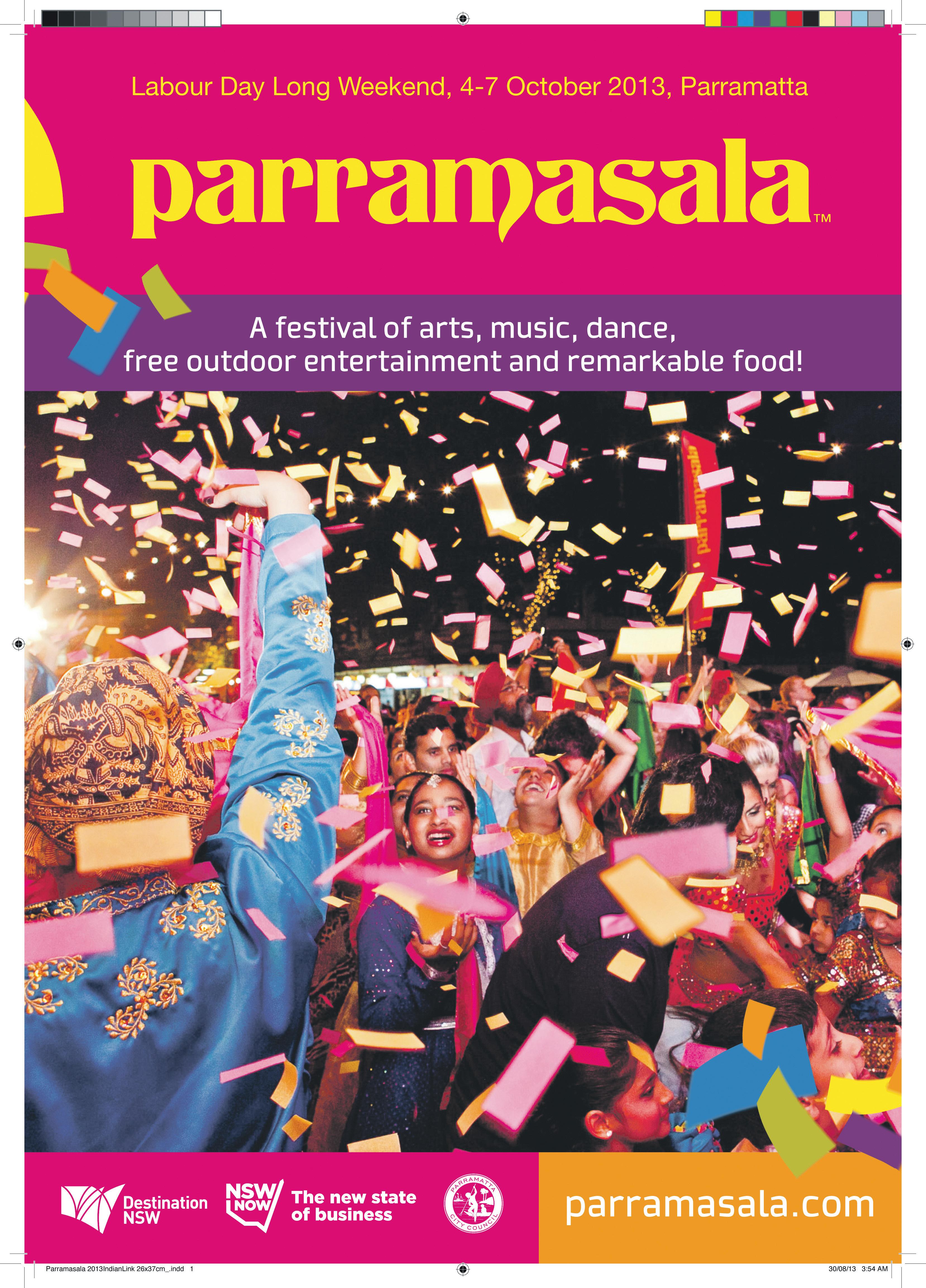

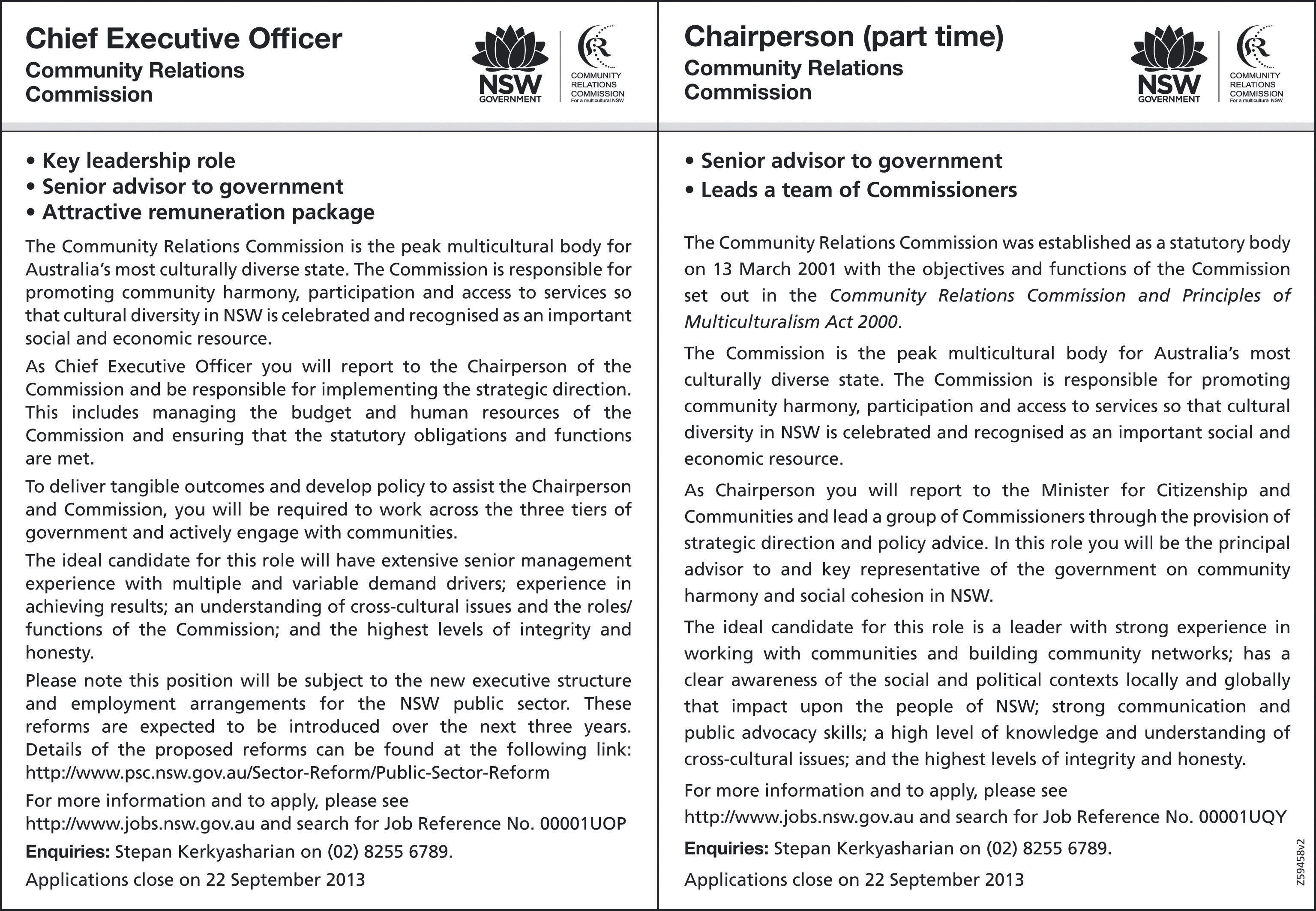
Acrowd of more than 200 Fiji Indian Sydneysiders took an emotional trip back to Fiji when they converged at the Blacktown City Library recently for the launch of Pratap Chand’s book, A Fijian Memoir: Footprints of a Girmitya’s Grandson
Chand, a former education minister in Fiji’s Labour Government and a schoolteacher turned trade unionist, recollected the living experiences of village life amid the perils of dire poverty. Through 15 chapters of his book he presented the carefree spirit of the Fiji Indians, their resourcefulness, capacity to share, celebrate and mourn together, and their value for education.
Brij Lal, Professor of Pacific and Asian History and director of the School of Culture, History and Language at the Australian National University, launched the book amid much pomp and ceremony.

Speaking at the launch, Pratap Chand said the book was his first attempt at “writing by remembering”. The project took him a few years to complete as he had to shift priorities, especially when his wife became ill.

“I also took time away from the project to care for and raise my grandchildren,” he said.
Chand said he was grateful to his ‘teacher colleagues,’ trade union supporters as well as those who believed in his work ethics when he was a government minister in Fiji. Apart from family and friends, the largest support for the launch was from former teachers from Fiji, most of who either worked with Chand or served under him when he was a minister. Roshan Lal, formerly of Waibuka, Ba who attended the event said that he remembered the leading role Chand played in ensuring children attended school.

“We always wanted to do the right thing as students because kaka (uncle) would always question us about our progress at school. We used to be scared when mum would tell us about his visits to our village,” he stated.
Chand recalled how he would travel to villages in the outback where the Fijian communities would lay the red carpet for his welcome.
“These villages could not afford
much but they would put on a grand show because a government minister was coming to their village.
I took pride in serving these villages through better education for their children,” he stated.
Chand said he remembered his own childhood in Fiji as being filled with adventure and fun. He said although they had very little, the Indians in Fiji always worked hard and reached out to help those within their networks. “The Indian community was focused on education and we as a community in Sydney today are benefiting from that investment,” he said.
Prof Lal, a living testament of the power of education, was then invited to launch the book which was sold out on the day.
Reminiscing on the life that was, Prof Lal, himself a son of Fiji who has attended international forays as a voice on Fiji’s history and politics, said the book was an archive of memories of a world disappearing before our eyes.
Touching on the fundamental demographic change that has reshaped Fiji since the 1987 military coup, Prof Lal said that in the 1970s Indians comprised around 50% of the country’s population. “They were the outright majority of the population, with all the fears and phobias that that generated. But now their numbers have declined to around 32%, and going further down, while the iTaukei (indigenous Fijians) now are around 60% of the population”.
Prof Lal predicted that with the changing shifts in the centre of gravity, a time will come when people will find it difficult to believe that Indians were once a majority in Fiji.

He lamented, “The best and brightest have left; those still in Fiji would leave if they could. Now, Sydney, Melbourne, Brisbane, Auckland, Wellington and Vancouver are the new beacon of our people”.
Pointing to these ‘massive’ changes and transformations, Prof Lal called on the audience to pen their own memoirs. “If we don’t write about ourselves, who we are, where we have come from, our hopes and aspirations and fears; who will?” he asked.
Presenting the essence of the book which he initially read in its embryonic form almost a year ago,
Prof Lal said at its most basic level the book presented the story of a personal journey. The story of a boy growing up in pre-modern times, without electricity or running water, reading by the flickering wick lamp in the silence of a thatched bure, completing primary school and through sheer effort and
determination completing university education and making forays into public life.
“In the course of telling his story, Pratap makes a vanished world come alive. He writes about games children played in the village (gullidanda, suri and hopscotch), about festivals that celebrated life, and the rituals and ceremonies that mourned its passing,” Prof Lal said.
The close-knit communal life that Chand described and celebrated in his book was typical of Indo-Fijian villages all around the country. This life, however, has disappeared in many places as cane leases have not been renewed and evicted tenants have drifted to the mushrooming squatter settlements fringing urban centres all around Fiji, where between 15-20% of the total population lives.
“The book is in a very real sense, Pratap’s tribute to that vanishing world that so formed and deformed our lives. Pratap uses his personal experience to reflect the broader forces and influences of history and the processes of social change of which he has been a part, of which he is a product,” he stated.
Prof Lal explored Chand’s antecedents, explain the concepts of girmitiya, and girmit (indenture) in detail. He touched on Chand’s treatment of education, stating that it was written “with intimate familiarity, from the inside as a student, teacher and administrator”. He mentioned the changes in literature that had shaped Fijian education, citing examples from traditional English and Hindi readers. “Pratap is absolutely right to emphasise the centrality of education in our lives,” said Prof Lal.
The highlight of the launch was when Professor Lal showed the audience his own treasured collection of first books, to amazed applause as the majority of attendees had also read the same textbooks.
Prof Lal then enumerated on university education, as propounded by Chand in his book. He explained how opening the University of the South Pacific in 1968 led to greater opportunities for higher education among the youth of Fiji. “Tertiary education was made available to children from poor homes who could not afford to go abroad. That was how I was able to go to university; that is how Pratap did. The USP was the central catalyst for the emergence of the Fijian middle class of which both us are a part,” he stated.
Chand plans to launch his book in Brisbane and Auckland before the end of this year. “I am waiting for more copies to be published,” he said.
Hindu pilgrims make the arduous 14km trek from the basecamp Hadsar in the Himalayas to Manimahesh Lake, during the annual Manimahesh pilgrimage at Bharmour, on 28 August 2013

Parliamentary approval was accorded to the landmark Food Security Bill recently in New Delhi, which gives right to subsidised grains to two-thirds of India’s 1.2 billion population numbering around 800 million, the largest such scheme anywhere in the world.
Under the legislation, beneficiaries would get five kg of grain per person, per month, which would include rice at Rs.3 per kg, wheat at Rs.2 per kg and coarse grains at Re.1 per kg.
The Lok Sabha passed the bill August 26 while the Rajya Sabha cleared it on the night of September 2 after 237 amendments tabled by opposition parties were rejected or not pursued.
After the bill was passed, Food Minister K.V. Thomas told reporters he was “happy that it was passed unanimously”.
In his reply during the 10-hour-long debate, he had attempted to allay opposition concerns, assuring that existing state schemes and their grain allocations will be protected.
The bill, introduced in parliament in December 2011, will now go to President Pranab Mukherjee for his assent before it becomes law.
The legislation, a pet welfare measure of Congress chief Sonia Gandhi and a part of the Congress election manifesto of 2009, is expected to be a game-changer for the party ahead of the assembly polls in five states this year-end and the 2014 parliamentary elections.
Apprehending that, opposition parties have called it a vote security bill.
The measure, which is expected to entail an expenditure of around Rs.1.30 lakh crore, has also been criticised on the ground that it would further stress a slowing down economy and a sliding rupee.
The Congress says that the additional subsidy burden of around Rs.28,000 crore can be taken care of and would not affect the fiscal deficit.
Incidentally, while Gandhi was taken ill on the day the lower house passed the bill, she flew abroad for a medical check-up on the day the upper house approved it.
In the Lok Sabha, she had strongly defended the bill, saying was a “historic step” to weed out hunger from the country.
In a speech heard in silence, Gandhi, 66, declared, “The food bill is meant for the less fortunate sections of our society. It is a historic step to eradicate hunger”.
“It is time to send out a big message that India can take the responsibility of ensuring food security for all its citizens,” she added to loud thumping of desks by ruling coalition members.
The real challenge for the Congress is now to get the bill rolled out, a responsibility entrusted with the state governments.
Most parties in the lower house supported the bill while expressing reservations on many of its provisions.
This repeated in the Rajya Sabha where most parties supported the legislation but wanted the government to approve the changes suggested by them.
Leader of Opposition Arun Jaitley of the BJP said the bill was mere “repackaging” of existing schemes in different states, and criticised the “hurry” to push through the legislation.
“The BJP supports food security for all, but opposes the way in which it has been introduced and certain contents of the bill,” he said.
“On one hand, the government is providing cheap food to people and on the other, (it is) increasing fuel prices,” said Communist Party of India-Marxist’s Sitaram Yechury.
“There are lots of states which give more. Don’t reduce the entitlement of states,” he said.
The Trinamool Congress said certain provisions in the food bill are making mockery of the country’s federal structure.
“This bill says the state will have to comply with whatever directions the central government gives... This is mockery of federalism,” TMC leader Derek O’Brien said.
Bahujan Samaj Party chief Mayawati said several central government schemes for the poor have failed to benefit them in the past, so efforts should be made to ensure proper implementation of food scheme.
Both Mayawati and Samajwadi Party leader
Naresh Aggarwal said the centre should have consulted the chief ministers before bringing the bill.
“Many political parties are linking food bill to coming general elections... we also see truth in this,” said Mayawati.
The bill proposes meal entitlement to specific groups, including pregnant women and lactating mothers; children between the ages of six months and 14 years; malnourished children; disaster-affected persons; and destitute, homeless and starving persons.
The measure envisages food grain entitlement for up to 75% of the rural population and up to 50% of the urban population. Of these, at least 46% of the rural population and 28% of the urban population will be designated as priority households. The rest will be designated as general households.
Pakistani traders
Pakistani traders who visited India, insist that good people “happen to be on both sides of the border” and they were happy to share bonds with their Indian counterparts that was “lifelong”.
Pakistani handloom and handicraft traders took part in the Dastkar South Asian Bazaar held at the Dilli Haat August 23-September 1 in New Delhi.
They said such cultural initiatives not only promote business, but forge a lifelong relationship between the people of two countries.
“Our relations are not delicate like political relations that will evaporate in a day” said Shahid A. Bundu Khan, owner of the Bundu Khan chain of restaurants. “We share a bond that is lifelong and is formed on the strong foundation of love”.
“This too is our janambhoomi (place of birth). My great grandfather was from India, so we very much belong here,” Bundu Khan said. “Political tensions between the two countries will always be there, but people from both sides want peace”.
His grandfather entered the business in 1948, and their “grill specialities” are very
popular in Pakistan, he said.
Nine groups from Pakistan came to India via the Wagah border in Amritsar. They brought with them flavours from various regions - intricate embroideries from Sindh, popular lawn fabric from Karachi, exquisite furniture carved in semi-precious onyx stone, and heavy gabba (carpet) work from Abbottabad.
Though their business was “average” considering the amount of money they had to pay for customs, and a tax of 11.35% on the sale of each product, yet the enthusiasm to be in India kept the Pakistani traders going.
“Custom duties are astonishing,” said Maihzaib Khan who represented the Sindh Women Chamber of Commerce. “We haven’t made profit but there isn’t loss either. The moment people hear ‘Pakistan’, they are excited to see us and talk to us with warmth and much respect”.
Maihzaib said her “multani” embroidered kurtis were much appreciated. On her first visit to India, she said “this feels like a second home,” and that she will be more than happy to come back again.
Khalida Khan was a bit apprehensive about how they will be received as tension between India and Pakistan had aggravated recently. “It all went well,” said Khan, with a sigh of relief. She was referring to the August incident in which five Indian soldiers were killed as Pakistan violated the ceasefire along the Line of Control in Jammu and Kashmir.
“We were wondering how we will be accepted post the recent tensions between the two countries. But people have been kind, and we have been received well,” Khalida said.
The war clouds will always play hide and seek, and political gains will keep skirmishes going, but Bundu Khan feels love across the border will always find new ways to communicate.
“If you cut my hand, can you tell me from the colour of my blood whether I am from India or Pakistan?” he asked.
“People want love not war,” he said. “Good people happen to be on both sides of the border and they will always find a way out to meet. Initiatives like this are bridges to bring people together. Let’s hope we have many more strong bridges in future. It is good for people and great for business”.
Excessive self-criticism is sending the wrong signals to foreign investors and the current economic scenario in India is not comparable with the 1991 crisis when the country was forced to pledge its gold to pay import bills, an Indian-American money manager has said recently in New Delhi.
“I don’t think India is going through a 1991 like crisis. That situation was different. It’s not comparable,” said Natwar Gandhi, 72, chief financial officer of Washington DC, who is credited with the fiscal turnaround of the US capital from near bankruptcy in 2000 to a surplus budget today.
“Foreign investors are withdrawing money not because something has suddenly gone wrong with the Indian economy. This is more to do with the US central bank’s move,” said the Gujarat-born Gandhi in an exclusive interview on a visit in New Delhi to share his experience on urban governance.
An alumnus of the Louisiana State University, Gandhi was alluding to the US Federal Reserve’s hints at easing the fiscal
stimulus that has been in force since 2008 to ward off the economic crisis, which experts say have hit currency markets in a host of countries, including India.
Foreign funds have pulled out over $12 billion from Indian debt and equities markets since the US Federal Reserve hinted at tapering stimulus in late May. This has led to almost 20 percent slump in the value of Indian currency against US dollar and a sharp drop in stock markets.
Gandhi said the huge pulling out of money by foreign funds from the Indian markets was linked largely to the US Federal Reserve’s comments.
He said excessive self-criticism and political compulsions were adding to the volatility in the currency markets. “There are problems, but I see a great deal of selfcriticism. Excessive self-criticism sends wrong signal to the foreign investors,” he said.
Gandhi said India is passing through very a difficult economic situation, even though the condition is not as critical as it was in 1990s.
In 1991, India was forced to pledge its gold in order to pay its bills as the country’s foreign exchange reserve had fallen to $3 billion, not enough even to cover three weeks of imports. Today, the foreign exchange reserve is nearly $280 billion that can cover seven months of imports. Besides, the central bank has more tools to manage volatility in the currency markets.

Gandhi pointed out that the 1991 crisis had acted as a trigger for economic liberalisation, and the Indian government must take similar bold reform measures to emerge stronger out of the crisis.
“You have to liberalise more,” he said. “This is the only long lasting solution to these kind of economic problems”.
As chief financial officer of the District of Columbia, in which Washington falls, Gandhi is responsible for the city’s finances, including its nearly $7 billion in annual operating and capital funds. He has built on the city’s financial progress by securing multiple rating upgrades from the major rating agencies for its general obligation bonds.
He said implementation is a major problem in India and it is a big drag on the country’s economic performance.
“I understand that the government has political compulsions. But they must act. They must have a bold vision,” said Gandhi.
On opening up of India’s retail sector for foreign investment, Gandhi said resistance to the move was natural given its impact on a large number of small traders.
“In Washington, there has been substantial resistance against Walmart,” he said. “It is facing similar resistance in other cities of the United States. No wonder, similar resistance is going on in India as well”.
However, he emphasised that the opening up of retail sector was good for consumers in India and the economy, and the government must implement the decision and encourage foreign supermarket operators to set up shops.
With Defence Minister A.K. Antony terming it a “defining moment”, the Indian Air Force (IAF) formally inducted the Boeing C-17 Globemaster III heavy-lift transport aircraft at a function in Hindor, UP.
Of the 10 C-17 aircraft ordered, three have
been delivered to the IAF while two more will be delivered this year and the remaining five in 2014.
The squadron will be based at the Hindon air force station.
“This is a giant stride for the air force,” Antony said, adding: “India and the US have had a long-standing partnership and this is another milestone”.
The C-17s will boost the IAF’s capability to transport troops and heavy equipment such as main battle tanks to the front, thanks to its ability to carry around 80 tonnes of load.
According to IAF chief, Air Chief Marshal N.A.K. Browne, the mighty aircraft would by US aviation giant Boeing, will be operated from advanced landing grounds in north and northeastern India.
The IAF’s C-130J Super Hercules mediumlift aircraft had last month landed at the highest airstrip in the world - the Daulat Beg Oldie in Ladakh close to the Chinese border - the region in which the two Asian giants were engaged in an impasse in April.
A spate of Chinese intrusions in the past few months has created tensions between the two south-east Asian giants who share a border of length around 3,500 km.
The C-17s will boost India’s plan to strengthen its capabilities along the disputed border with China.
The number of tigers in Bihar’s only tiger reserve has more than doubled in the last three years, an official said recently in Patna.
“We have counted 22 tigers in the reserve at present on the basis of camera trap census,” Santosh Tiwari, director-cumconservator of the Valmiki Tiger Reserve in West Champaran district said.
He said census was conducted by the VTR management in collaboration with World Wildlife Fund (WWF)-India.
Tiwari said the number of tiger was only 10 till 2010. “In last three years, the population of tigers has jumped like never before in the 899sq km reserve”.
He said that all of us including forest guards are happy. “This positive development is a matter of celebration,” Tiwari said.
He said the National Tiger Conservation Authority (NTCA) would be informed about it soon.
According to him, VTR had started the tiger census work in February this year and 210 camera traps were used across the reserve for collecting data till June.
He attributed a friendly environment in the reserve for increasing number of tigers.
Tiwari said the improvement in the condition of grasslands, spread over 450 hectares, have been attracting the big cats for the last few years to the reserve, nearly 200km from Patna.
Besides, intensive patrolling by local youth played a major role to check entry of poachers and others in the reserve.
“Tigers are more safe than before,” he said.
Tiwari said that a tigress gave birth to three cubs in the reserve a few months ago - the second such development in the area in oneand-half years.
Prime Minister Manmohan Singh recently launched a portal aimed at making Mahatma Gandhi “accessible all over the world”.
“Mahatma Gandhi is not only in our past, he is in our present and will also form a
significant part of the future that we want for the country and its people,” he said in New Delhi.
He said he was confident that the ‘Gandhi Heritage Portal’ would be an invaluable resource for generations to come, especially for the youth.
“It is a self-evident truth that knowledge has to be an inclusive process, where barriers to learning are systematically dismantled,” he said. “Only a society that is committed to the free flow of ideas can hope to lead in an age of knowledge”.
“Our government has taken many significant steps in this direction. The National Manuscripts Mission, the Digital Library of India and the Gandhi heritage portal are all important milestones in this journey,” he said.
The portal is a technology-driven initiative aimed at making Mahatma Gandhi accessible all over the world on an electronic platform.
“It aspires to be one of the most authentic open source archives on the life and thoughts of Mahatma Gandhi,” said Manmohan Singh.
The prime minister said, “This collection of documents provides great source material on our freedom struggle and captures the triumphs and tribulations, the thoughts and visions of an entire generation led by Bapu”.
“We are keen that a world-class national memorial should soon come up at Dandi (Gujarat), which will inspire the younger generation,” he said.
The portal, which will house the intellectual heritage of Gandhi, has been developed at the Gandhi Ashram in Gujarat’s
Sabarmati, where its office is also located.
The culture ministry had sanctioned Rs.8 crore as a corpus fund to the Sabarmati Ashram Preservation and Memorial Trust (SAPMT), Ahmedabad, to create the portal. The trust would earn about Rs.75 lakh as annual interest to run and maintain the portal.
A new mobile phone app that aims to help report sexual harassment to authorities would be pilot-tested by girl students of Jamia Millia Islamia shortly in New Delhi, an official said.
Through the new app called Safetipin, users can conduct a spot safety assessment through their smartphone and upload information and pictures.
The app includes a feature called “wall”, where users can view and become aware of all recorded information in their neighbourhood and other defined locations and participate in an interactive environment.
The mobile app would help users upload information on harassment, along with sharing information about police stations and hospitals.
“In collaboration with Jagori, a nongovernmental organisation, Jamia is going to organise an interactive presentation on operationalising women’s security and a demonstration on ‘Safetipin’ Monday,” said Simi Malhotra, the university’s media coordinator.
IANs
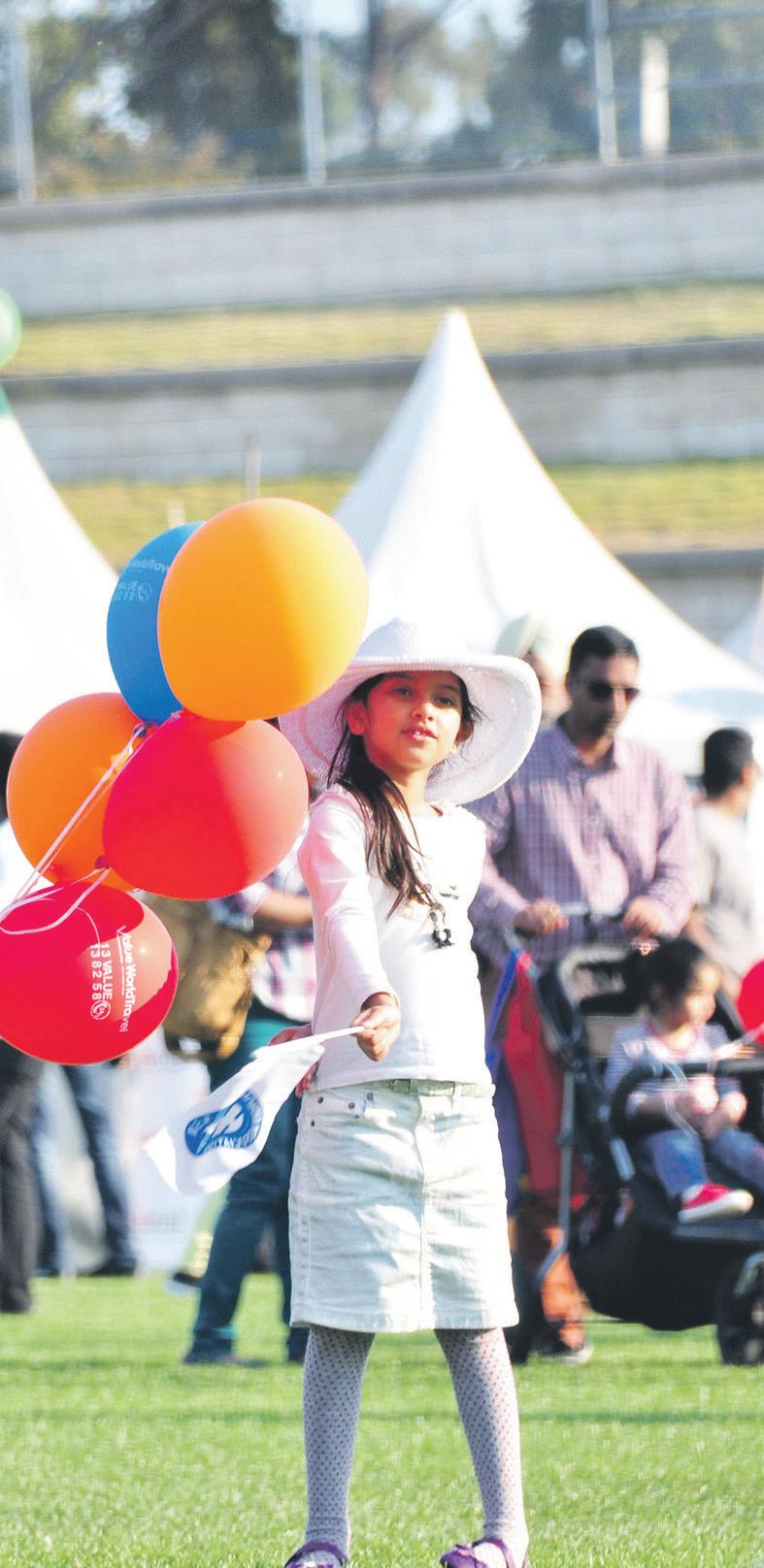
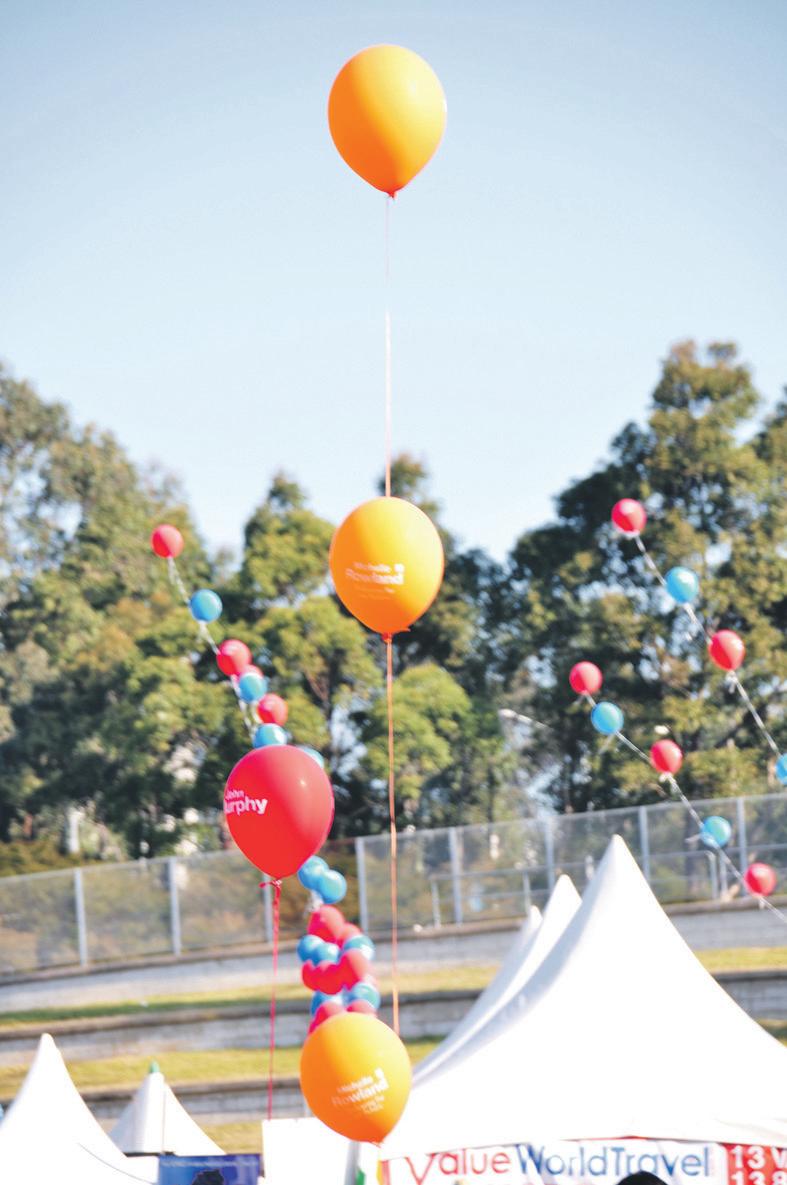






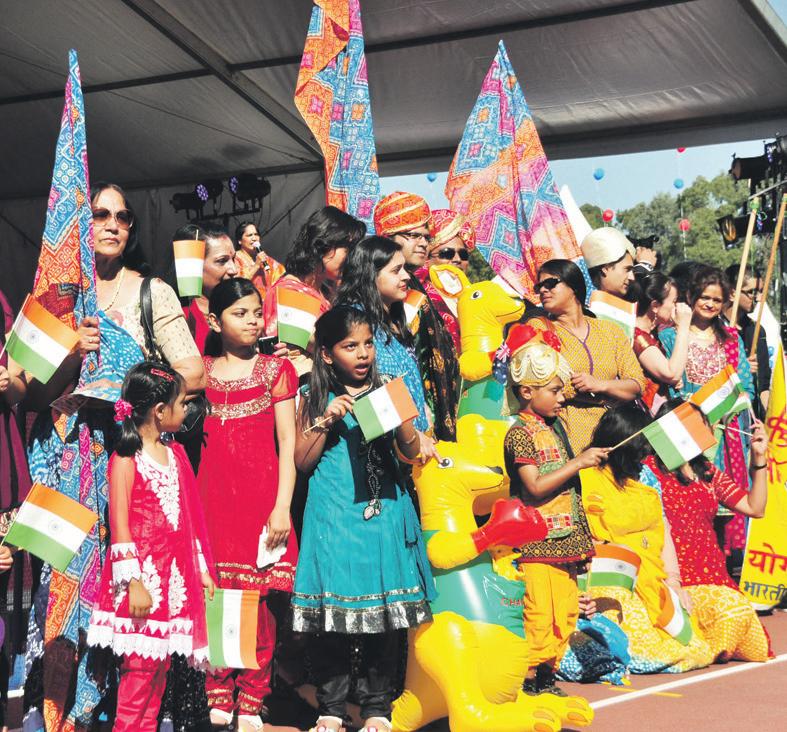
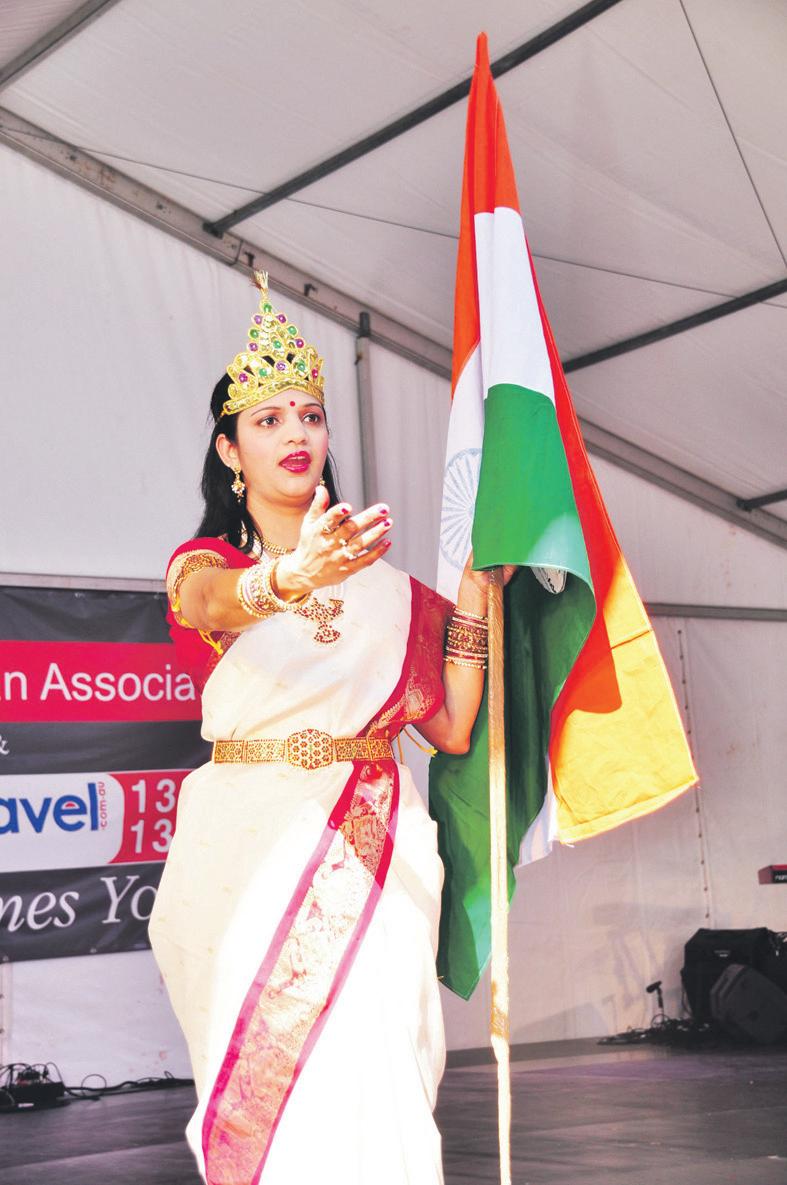
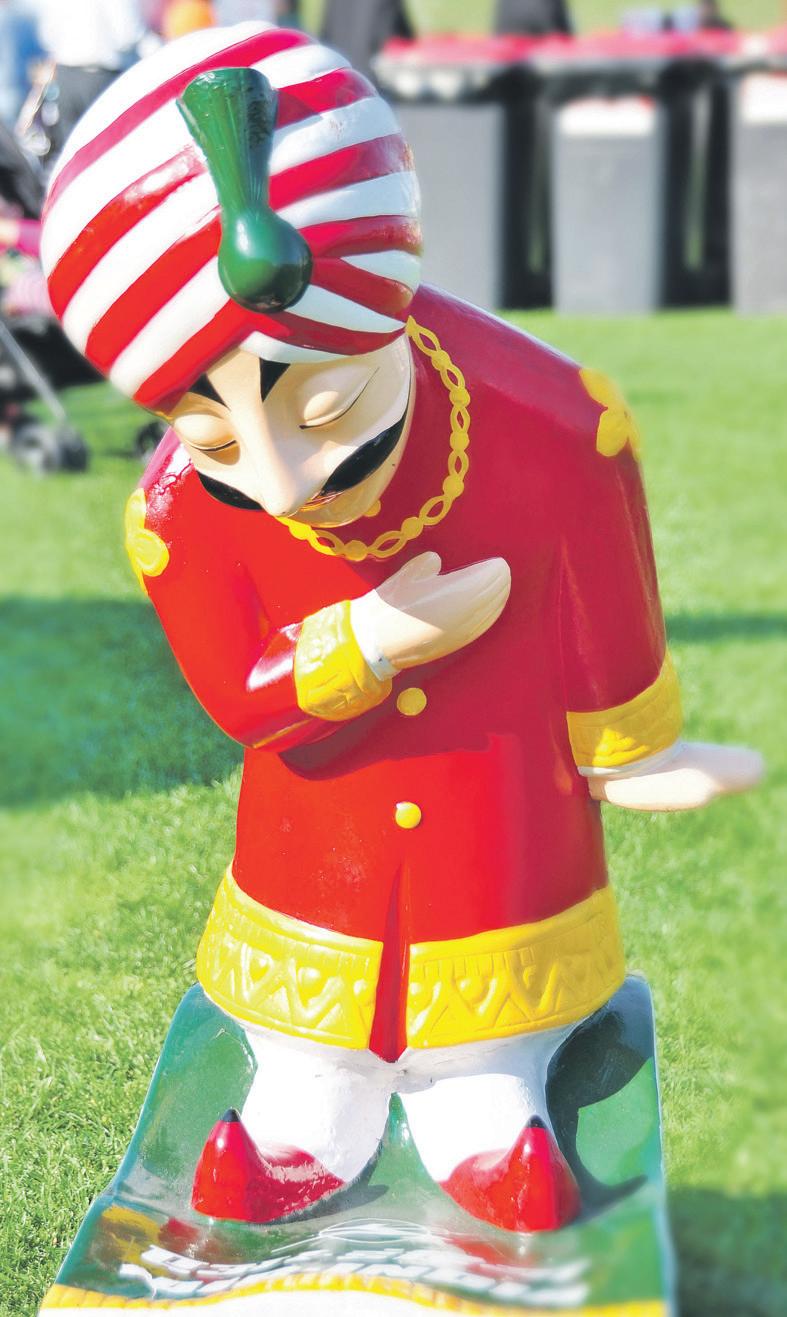

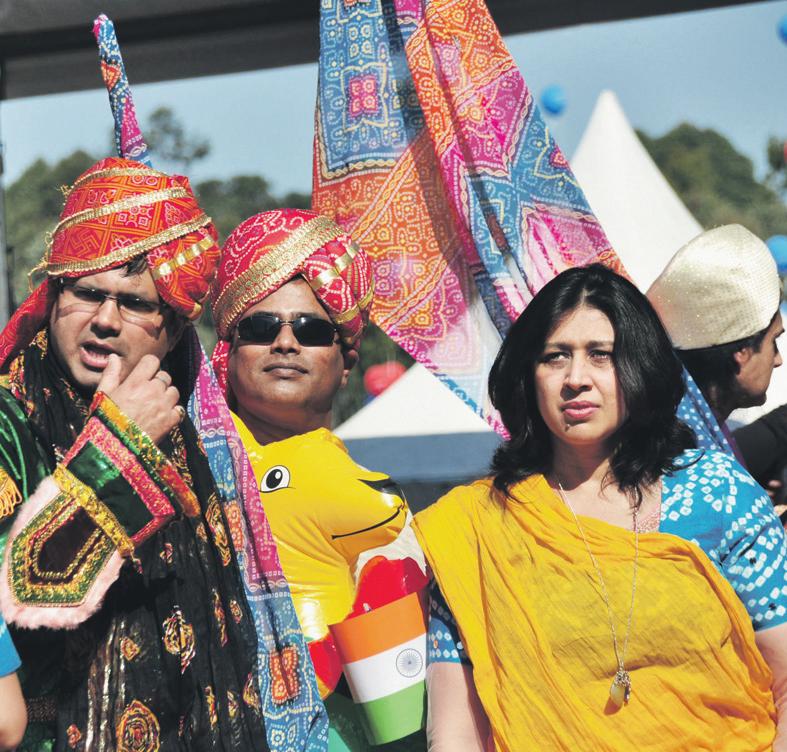

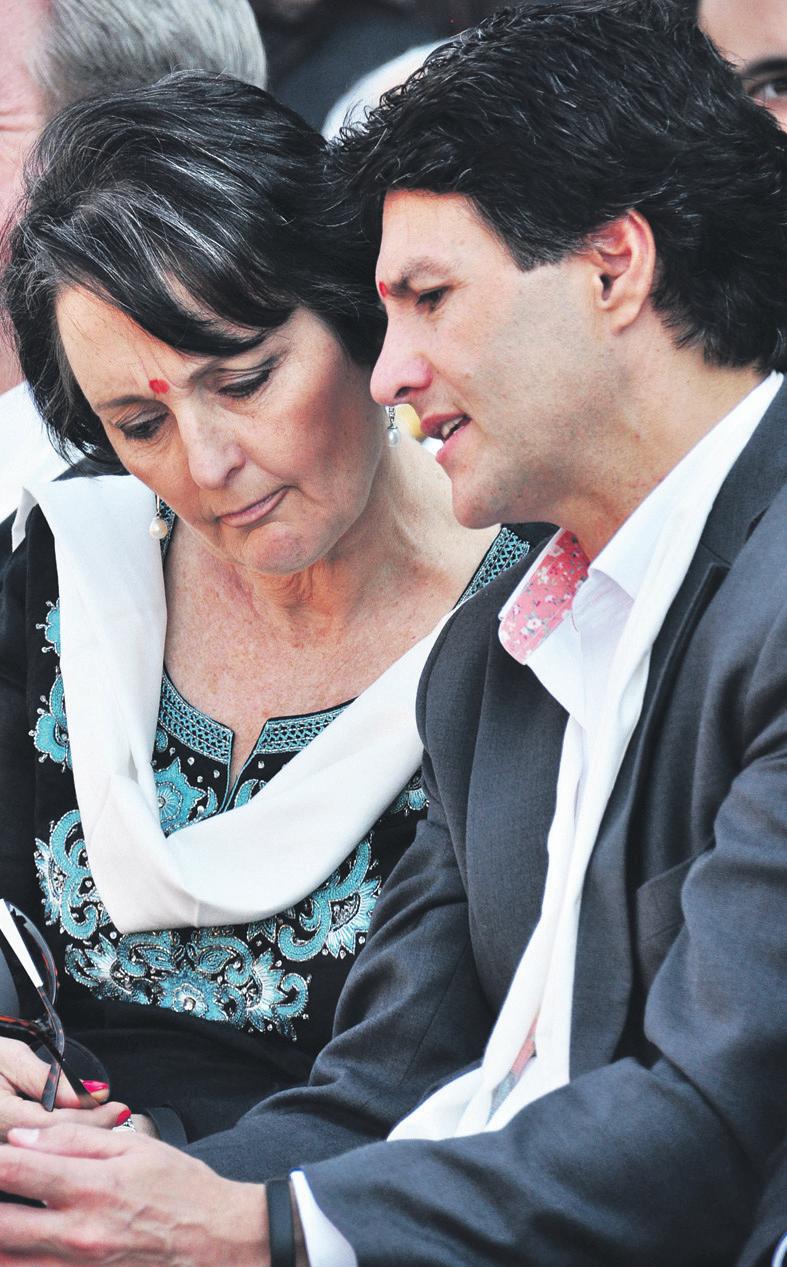
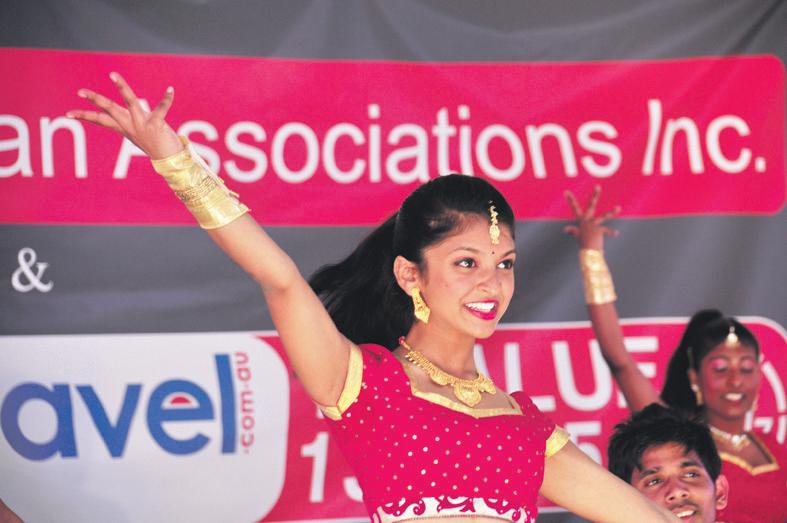
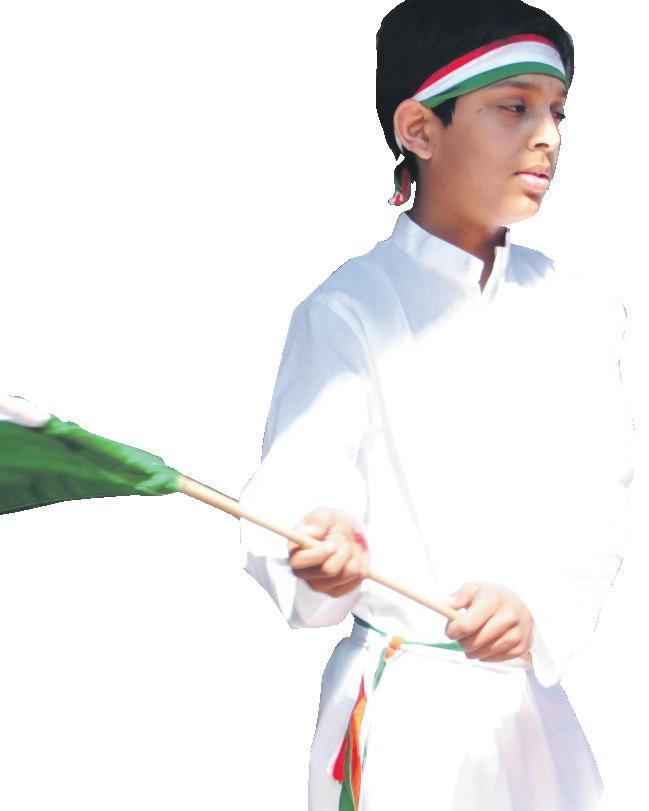
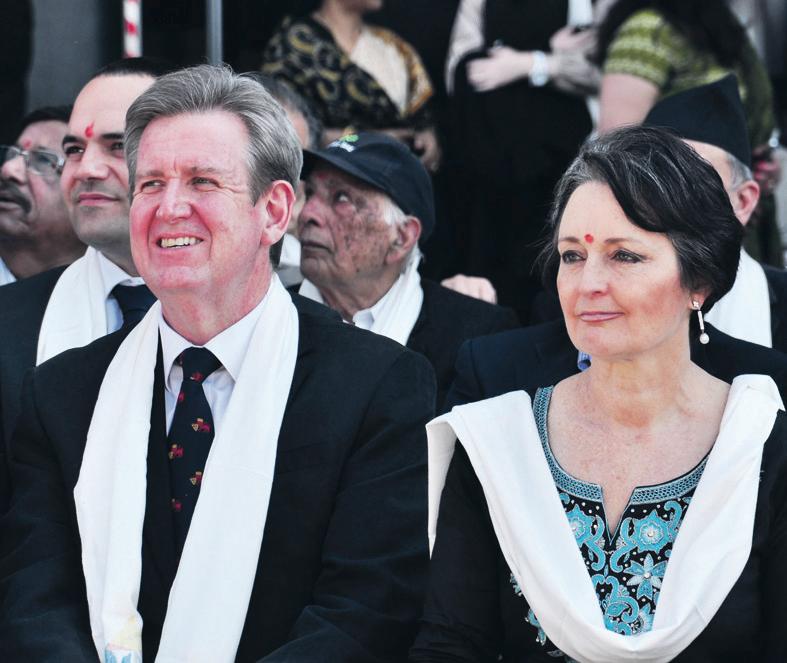
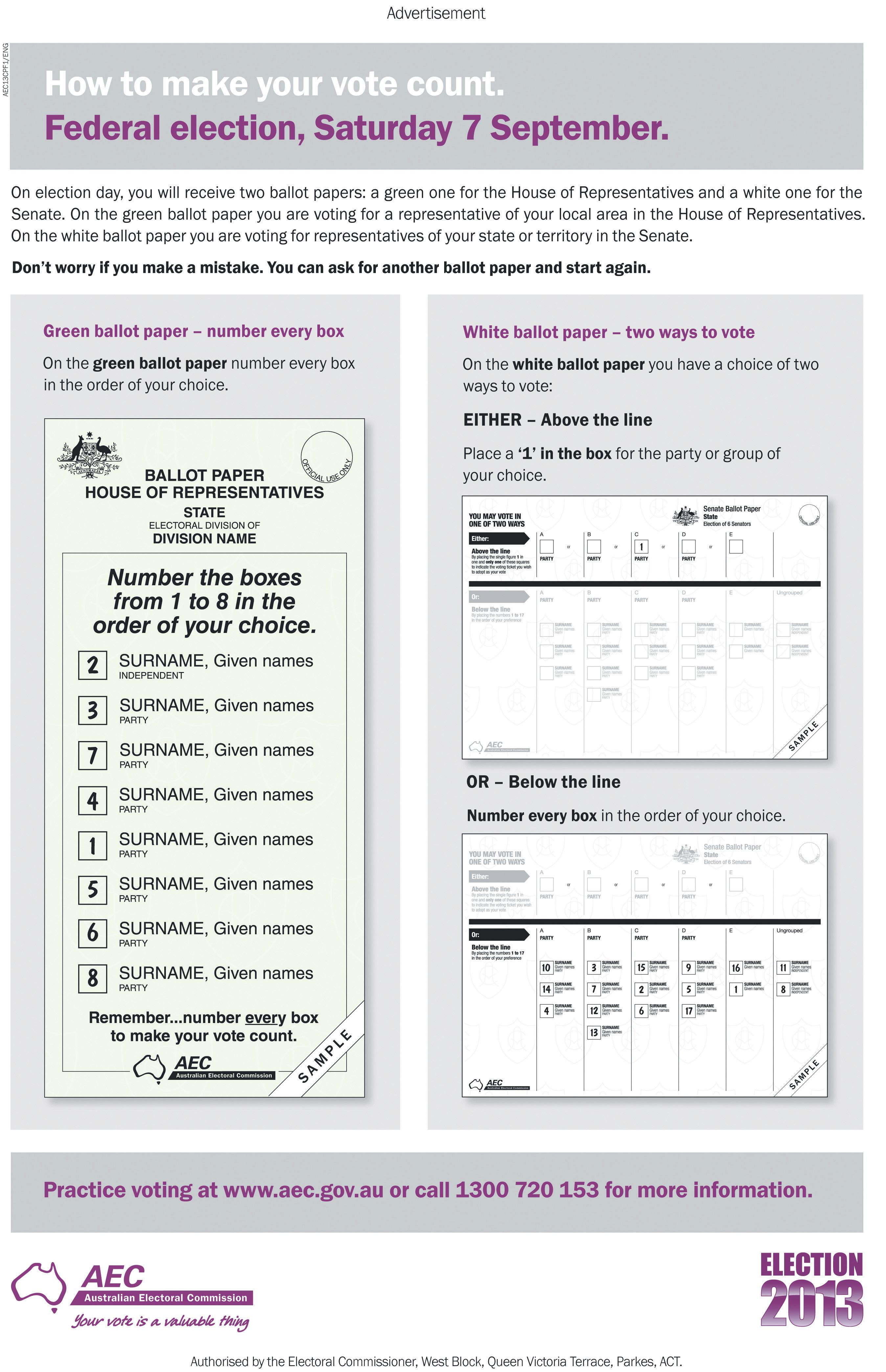


An Asian regional relationship needs to be enhanced and maintained, beyond traditional ties
By NOEL G DE sOuz AWhen World War II ended, the great slogan in Europe was ‘Freedom’. The Nazi assault on freedom was the justification to go to war against them. But when the same war ended in Asia, former colonial powers attempted to reimpose their rule over their former colonies. A glaring example was General MacArthur’s promise of freedom for the Philippines, which was ultimately kept. The two prominent examples of attempted reconquests included the French in Vietnam and the Dutch in Indonesia.
British troops landed in Jakarta with the intention of helping the Dutch to reconquer their former colony in what was arrogantly described as a ‘police action’. It is significant that Bob Menzies, the then Prime Minister of Australia, went against the British action. He teamed up with the then Indian Prime Minister, Jawaharlal Nehru, who was helping the Indonesians to safeguard their newly won independence, and denounced any attempts to re-subjugate Indonesia.
the precise geometry of both Angkor Wat and Borobudur. Angkor Wat is the world’s largest Hindu temple. Its intricate bas-relief carvings reveal the stories of Hindu mythology. Built by the Emperor Suryavarman II, Angkor Wat derives its inspiration from Southern India with regard to design as well as artistic origins. Angkor Wat is an important World Heritage Site. The Archaeological Survey of India has being carrying out restoration work from 1986. Hinduism and Buddhism converge in Southeast Asia. There may be those who seek to point out that there are ‘great differences’ between Hinduism and Buddhism. However, they need to remember that the convergence of those two religions takes place even in Muslim-majority Indonesia. In Thailand and in Cambodia the royal houses are traditionally Hindu, whilst the general populations are Buddhist. Important occasions have ceremonies conducted by Brahmin priests. Recently, the ceremonies for the funeral of King Norodom Sihanouk of Cambodia were Hindu. A similar situation exists in the royal houses of Bali.
It was the joint initiative of Australia and India in the United Nations which led to the Dutch withdrawal from Indonesia
It was the joint initiative of Australia and India in the United Nations which led to the Dutch withdrawal from Indonesia. Menzies had realised the importance of neighbouring Indonesia to Australia. The echo of this sentiment is found in former Prime Minister Howard’s statement that there is no country more important to Australia, than Indonesia. So when he became Australia’s Prime Minister, the first country that Howard visited was Indonesia, and not Britain as had been the norm till then. Prior to this, Paul Keating, as Prime Minister of Australia, had been criticised for having close dealings with Indonesia.
For India, Indonesia is very much its cultural child, its genetic and cultural links with that country being strong and enduring. It was Biju Patnaik, a well-known Indian politician, who personally piloted Indonesian leaders to safety when the Dutch were out to seize them.

In the nineteenth century, both France and the Netherlands had advanced their colonial pursuits in Southeast Asia. During that period their archaeologists had been researching the past of their newly conquered colonies. The tropical jungles of those countries were overgrown and covered large areas where ancient monuments lay. These included Angkor Wat in Cambodia and Borobudur in Indonesia.
Clearing the forest growth was an arduous task. Modern space science methods have been used and have greatly helped to uncover
India’s national emblem is the Ashoka pillar. It has been reconstructed from various bits and pieces found in historic sites in India. However, Thailand has several well-preserved Ashoka pillars such as in Chiang Mai.
Borobudur is arguably the world’s biggest Buddhist monument. Built in the ninth century, it encapsulates Mahayana Buddhist philosophy. Constructed during the Shailendra dynasty, it demonstrates the influence of the Gupta dynasty of India. The Gupta Dynasty excelled in several fields such as science, agriculture and the arts. Indonesia remembers its Buddhist past. It has incorporated the Pancha Sila (the five Buddhist principles) into its educational system and its relationships with other countries.
The Shailendra Dynasty covered the central plains of Java as the Medang Kingdom, as well as the famous Sri Vijaya Kingdom. Hinduism and Buddhism flourished side-byside. In Borobudur, the pilgrim goes through a symbolic journey which marks the ‘three worlds’ of Buddhist cosmology: the world of desire (Kamadhatu), the world of forms (Rupadhatu) and the world of formlessness (Arupadhatu). The monument is large and extensive, and has nearly 1500 panels carved into its walls.
India needs to reinvigorate its relationship with Southeast Asia, for which the cultural base already exists. These countries are also strategically important to Australia. India has a large enough navy to patrol the eastern rim of the Indian Ocean. Its growing naval power should enable it to also have patrols in the Western Pacific as well. News reports suggest that India is building a large aircraft carrier. The sinking of the submarine INS Sindhurakshak has jolted India from any complacency, and it is determined to bring its current ageing fleet up to date.
DRawn: TuesDay 1 ocTobeR 7pm on aiR






Aparent phoned the other day in search of advice about her son. She said, “My son is very clever, but you wouldn’t know it from his school reports”. When questioned she reported that at a recent parent-teacher night she was given her son’s report showing that he had been awarded ‘B’ and ‘C’ for everything – far below his capacity or ability. The teacher said to the parents, “You son is underachieving”. The teacher then stopped, offering nothing more than this statement.
As is the case with most parents, this mother wondered what more she could do. She wondered whether she should have more structure and greater discipline at home. She wondered whether to raise her voice and clarify her expectations to her son, or whether to shrug and give up. The most obvious thing to do escaped her.
She could have asked the teacher, what was being done to remediate and address the underachievement. When I told the parent that she could have
inquired of the teacher about her intentions for helping her son, there was a long pause. She then said, “Am I allowed to ask that?”
Um… yes!
Many teachers are dedicated and hard working professionals who continually improve their strategies and find new ways to address specific learning needs of the range of students. However, as with any profession, many teachers also simply treat teaching as a ‘job’ and therefore get into the habit of forgetting to look at a situation with new eyes.


The effect of this is the parent-teacher interview just described. The teacher hands the responsibility for learning to the child and the parent, but does not actively demonstrate accountability, determination or insight. Good teachers do not ‘hit and run’. They do not blame students for underperforming. They take responsibility and ask themselves, “Is there more I can do? Am I contributing to this underachievement? How can I teach this student how to perform to the best of their ability?”
Of course it is possible that a teacher, with the best of intentions, may still not be able to help an underachieving child work to the best of their ability. However, in trying different modes of presentation, in encouraging and supporting,
self-esteem is built. Therefore, if nothing else, the student will feel valued and respected – two basic, or fundamental attributes of classrooms where students learn.
The parent was stunned when I told her she had a right to ask the teacher what was proposed to do to help her son to achieve. The parent said she did not know that teachers could be held to account. We then talked through whether she felt confident enough to ask the question of the teacher, “So, what are you doing about it?”
This was clearly a very difficult proposition for the parent. She felt very uncomfortable about the prospect of asking the teacher about what might be done to help her son achieve.
At issue here is our understanding of what a ‘teacher’ may be. The title ‘teacher’ implies an active professional, not a passive one. A teacher is there to teach, not to blame or justify, or avoid responsibility. If a child is underachieving, then it is incumbent on a reasonably well-paid professional to try different strategies to engage the child and support their learning. This includes addressing skills and knowledge gaps, addressing confidence issues based on fear of failure and also finding means by which to shape learning experiences so that they are engaging and foster inclusion.
Parents need to know that their responsibility for assisting their children to learn occurs outside of school hours. During school hours, the responsibility shifts to the teaching profession. Thereby, the only way that parents can shape what is done is through asking appropriate questions and expecting appropriate accountability. Such accountability takes several forms including:
• A teacher honestly reporting the academic strengths and weakness they perceive of each child.
• A teacher taking responsibility to address any academic issues and to state clearly what they propose to do and how and when.
• Teachers initiating follow up at regular intervals so that the student feels guided and the family feels included in the process of addressing any issues. This can easily be arranged through email if direct talking is hard to organise.
In this way schools and families work in partnership. Moreover, if there is this type of alliance then it is highly likely that a student will be in the very best framework for success. This is because there are consistent expectations between school and home, and clear communication.
So the next time you are in a parent-teacher situation and a teacher says, “Your child talks too much,” “Your child works too slowly,” “You child has not done
Good teachers do not ‘hit and run’. They do not blame students for underperforming. They take responsibility and ask themselves, “Is there more I can do?
homework,” “Your child could do better if only they were focused,” among other comments, ask the teacher what strategies they will implement to address these matters. Then ask if there can be a follow up in four weeks to see how things are progressing. Be brave: ask and you may receive.
If a child is underachieving, then it is incumbent on a reasonably wellpaid professional to try different strategies to engage the child and support their learning

It’s large, it’s colourful and it’s attractive.
DareBone’s Big Break by Gleeson Rebello and Jamie Harisiades, is the kind of book that even draws adults to go through it and, before you realise it, you’ve picked up something new.

Its main author, Gleeson Rebello, is a pediatric orthopedic surgeon born and brought up in Goa. He is currently a consultant in the department of orthopedic surgery, Massachusetts General Hospital, and is on the faculty of the Harvard Medical School.
The book describes itself as “a tale of trauma, treatment, and recovery in rhyme”. It deals with a story from everyday life: a child gets injured on the playground, and ends up in the emergency room.
Rebello says his attempt is to “educate without intimidating” and “entertain without underestimating”. So this book packs in poetry, humour and, importantly, medical accuracy.
DareBone is the boy who suffers his first major injury - a broken elbow. We meet him together with his “wise-cracking sidekick,” the dog Wag-A-Bone.
Given the authors’ medical backgrounds, DareBone not surprisingly meets a number of “medical heroes,” including the orthopedic surgeon, as he journeys through surgery and recovery.
“The book was written with the aim of raising the bar in terms of explaining the nuts and bolts of everyday medical practice to a smarter generation of children, without underestimating their ability to pick up complex concepts. A secondary aim of the book is to make medicine and biology ‘cool,’” Rebello says of the book.
He sees the book as “very technical from
an orthopedic standpoint, but at the same time funny and easy to comprehend”. It is aimed at children of 4-10 years, as well as their parents and healthcare professionals, or educationists who deal with children of that age.
“The response to the book has been very encouraging both from healthcare and non-healthcare-related professionals. It took two years to write it once I thought of the idea... (There also was) interacting with a lot of frightened children with broken bones in the emergency room and my clinic, who were mostly afraid because of lack of knowledge of what was to follow,” Rebello said.
This is planned to be the first of several books from Rebello, who partnered for this job with Jamie Harisiades. They will speak about common childhood conditions like allergy, autism, asthma, and obesity.
Rebello is also working on a similar book on childhood obesity and also create an app out of DareBones Big Break
Rebello trained at the Goa Medical College, Christian Medical College in Vellore and the Kasturba Medical College, Manipal, before he joined Massachusetts General Hospital, Boston, as a research fellow and on a staff position in 2008. His father, Francis M. Rebello was closely associated with a local Konkani newspaper in Goa, founded through public donations in the 1970s.
Not surprisingly, Rebello says he caught the writing bug “right from my schooldays”.
“Every doctor has thousands of stories inside him. The story of his professional life is but a collection of stories of his patients’ lives”.
Frederick NoronhaReading Finding Neema is almost like living a life vicariously. Juliet Reynolds, the author of this memoir, has years still to go and a bit of writing still to do. Through the book, though, this filmmaker and art curator offers readers a candid and self-reflexive account of her marriage, her work and, most of all, her child. Yes, her child. She is legally only the guardian of Neema, the autistic child of a Nepali mother, but it is clear that she derives much of her own sense of self in relation to him. In finding Neema, thus, it is almost like Reynolds finds herself.
The memoir is a linear narrative, beginning with Reynolds’ acquaintance with the man who would be her husband, the one who would ultimately make her think of India as her own. Anil Karanjai is the not-so-widelyrenowned painter of what is known as the Hungryalist school that took roots in the early 1960s in West Bengal, to shake off, once and for all, the colonial yoke in poetry and art. Reynolds would showcase Karanjai’s works and find solace in his arms.
Karanjai appears, in this memoir, as a man only too willing to go with the flow, spontaneous in his expression and deeply perceptive, able to communicate with ease across cultures and continents. Not a man conventionally trained or educated and with little care for wealth. Precarious living seems to come naturally to him. And after his sudden death, Reynolds wonders if she knew all she should have about his visits to the doctor. Could he deliberately have left a condition untreated? Given the character portrayed in the narrative, that might well have been the case.
The couple remains financially insecure as Reynolds gives up a teaching position to explore other avenues and Karanjai’s paintings bring them only an unsteady
income. The portraits he paints are sometimes commissioned, but the flow of money is not regular.
So where does Neema fit in, one might ask.
Neema is the child of one of the people who serve in the Karanjai-Reynolds household. The couple has a steady stream of people hired for domestic labour and it is interesting what a range of experience these help come with. Among the reasons Reynolds offers for continuing to live in India is the relative ease with which she could outsource some of her domestic work, especially with a child like Neema to look after.
The narrative about the domestic arrangements and the people who become part of the household take up quite a chunk of the book. The cross-nation mobility of domestic workers and the sorry tales of family instability are revealing.
There are also frequent references to friends, and an endearing portrait of Reynolds’ mother, whose relationship with Neema is both deeply affectionate and unconsciously pedagogical, aiding him in developing motor skills by buying him simple toys.

Neema is the one bond between all the people who visit or work in the house. He is also the centre of much of Reynolds’ striving and it is with some pride that she closes her book as she reflects upon Neema as a young man, taking young ones suffering, like him, with autism, under his wing.
This is a straightforward memoir and it does not pretend to be high literature. It is a tale simply told of a life in which many unforeseen things are accepted with grace. There is love, and anger; there is goodness, and kindness - ordinary, yet rare.
Rosamma ThomasThis issue we bring you books that reach out to children, but in very different ways







No matter what your problems are I can help solve them with honesty and efficiency, If you are suffering from curses or evil case I will get rid of them, marriage, love problems unite your family, bad luck,sexual (impotency-conceive), business, unknown diseases, court cases, miss furtune, read you future, money(lottory) games etc.
Do not suffer in silence come and see ISPIRITUAL YOUSUF
It’s effective and confidential
Mob: 0470 607 887 or 0410 093 812
Pay upon result, consultation personally or by correspondent
Speaks: English, Arabic and Portuguese
Email: nobasnobas2005@yahoo.com
With his 37 years experience he is one of the most acclaimed African medium who is God gifted and well known for his competence and efficiency of his work. He is an expert in all occult matters and will help you solve all your problems even in the most desperate cases. He will help with bringing back loved ones, exams, protection from your enemies, exorcisms, and success in business, sexual difficulties & much more.
THE RESULTS ARE IMMEDIATE AND 100% GUARANTEED NO FALSE HOPE
DONT HESITATE TO CALL ON 0424 799 994 OR 0469 666 519
W ITH 10 Y EARS OF E x PERIENCE IN TAxATION & B USINESS FASTER R EFUND WITH E LECTRONIC LODGEMENT
We are specialized in:

Preparation of the Individual & small to medium sized Company Tax Return, Partnership, Trust, Superannuation Return, Payroll and BAS. Registration of ABN and Business Name; Set up of Company, Superfund, & Trust. Financial Planning, Tax Investment Property, Mortgage Loan, Audit for Real estate Trust Account, Audit-Solicitor Trust Account, Audit for self-managed superannuation, Travel Agents and all other businesses.
Check out our Website for more Information at www.taxationbusiness.com.au
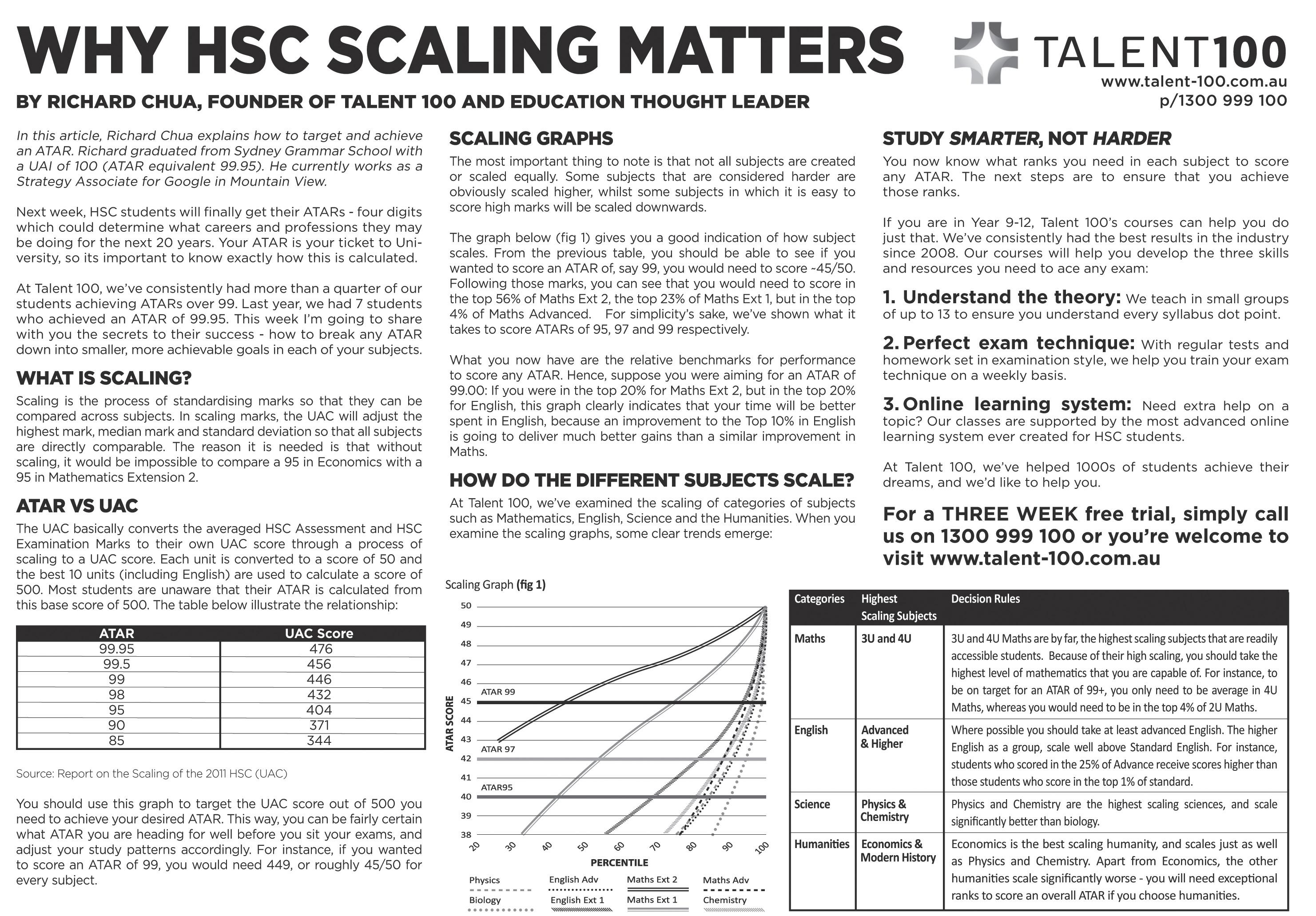

For Best Professional advice & Service, please contact: Waseem Yousef Suite 3, 55 Main St. Blacktown NSW 2148 P O Box 8575, Blacktown NSW 2148
Ph: (02) 86787438, (02) 86787437 Fax: (02) 86787439
Email: waseemy@taxationbusiness.com.au
ARE YOU FACING DIFFICULTIES, DO YOU HAVE THE FEELING THAT EVERYTHING IS GOING AGAINST YOU IN YOUR LIFE. NO LIFE
WITHOUT
(ABN- 58 161 720 501)
For upcoming ENS and RSMS changes from July 2013 Call now at 0433 986 780 0421 119 628
i) Advice on Migration pathways
ii) General Skilled Migrationspecialist
iii) Student Visas( new and extension)
iv) State Sponsored Visas / ENS / RSMS / 457
v) Business Migration
vi) Partner and Family Migration specialist

vii) Admission in Australian Colleges and Universities
• MRT Review procedures in Australia
• OCI / POI / Indian Passport Application / Renewal
We also specialize in

Migration Agents Registration Number www.mara.gov.au 1169617
Home / Commercial Loans (MFAA Certified) specialist
Contact:
Sonal Agrawal Syed Mohiuddin (JP) Ex-Visa officer MARN:1169617, MMIA:5385 MARN:1171248, MMIA: 1021, MFAA:54385


Level 2, Suite 8A, 48 Macquarie Street, Parramatta, Australia 2150 PH (02) 86775161, FAX: (02) 98916314

Email: contactus@completemigrationservices.com.au
(We Speak English, Hindi, Marathi, Urdu, Telugu) For quick visa assessment fill the online visa assessment form on www.completemigrationservices.com.au
We help you achieve a better life and pursue your dreams
The teardrop-shaped island of Phuket has long been known for its golden-sand beaches and nightlife, and more recently the catastrophic tsunami of 2004. It is the size of Singapore, and is regarded as southern Thailand’s premier beach destination. It’s the wealthiest province in Thailand, offering a multitude of stunning hotels, top-notch restaurants, offshore islands to explore, and the historic Phuket Town.
“Where are you going again? Phuket, wow, I’m going there too, let’s catch up!” exclaimed my daughter Nicky. The morning after my arrival, I woke to a glorious tropical sunny day with views of Naithon Beach and the Andaman Sea beyond. I inquired how far it was to the next beach, where I hoped to find Nicky. “Three kilometres, very close,” was the reply. I set off up and down hills, since Phuket is renowned as picturesque, largely due to its lush hilly terrain, to Naiyang beach lined with rustic restaurants and boutique hotels. Further along, I walked along the blissfully deserted Mai Khao Beach, part of Sirinat National Park. Between water stretching out to the horizon and a backdrop of casuarinas and palms, a wide swath of powdery sand lies undisturbed, except for once a year when turtles lay their eggs here. I began the long 9km trek back to my hotel, with no sign of Nicky, or a taxi charging less than an extortionist’s fare.
On seeing me return exhausted and suffering from prickly heat rash, one of the manager’s promptly packed me off to the spa for a curative aloe vera treatment, while apologising for the kilometric miscalculation.
Phuket Town was my next destination, with public buses called songthaews conveniently radiating out to all beaches stretching down along the west coast. Between the beaches though, tuk tuks and taxis are the only form of transport.


Komala and Kata are quiet and pretty, while Karon is livelier. The boisterous party crowd included rowdy Australians on my flight heading for Patong, with its bars, tattoo parlours,



fast food restaurants and tacky souvenir shops. While the walk between Kata and Karon was pleasant, Patong was five kilometres further north.
I must have affected a weary nonchalance, as I eventually found a tuk tuk driver willing to take me there for 100 Baht, which in any other part of Thailand would be considered a lot. Dropped off at a vast shopping centre called Jung Ceylon, I then walked along beer-soaked Bangla Road where Phuket is at its brashest and seediest with a heaving crush of bars, ‘ladyboy’ cabaret shows and microphones blaring out details of the kick boxing event to be staged that night, starring an international line up of rather scary looking young men. The sport is brutal with fighters pummelling each other with fists, feet, elbows and knees.
Patong beach however, is perhaps Phuket’s finest and to its northern end are high-ranked resorts and quality restaurants.
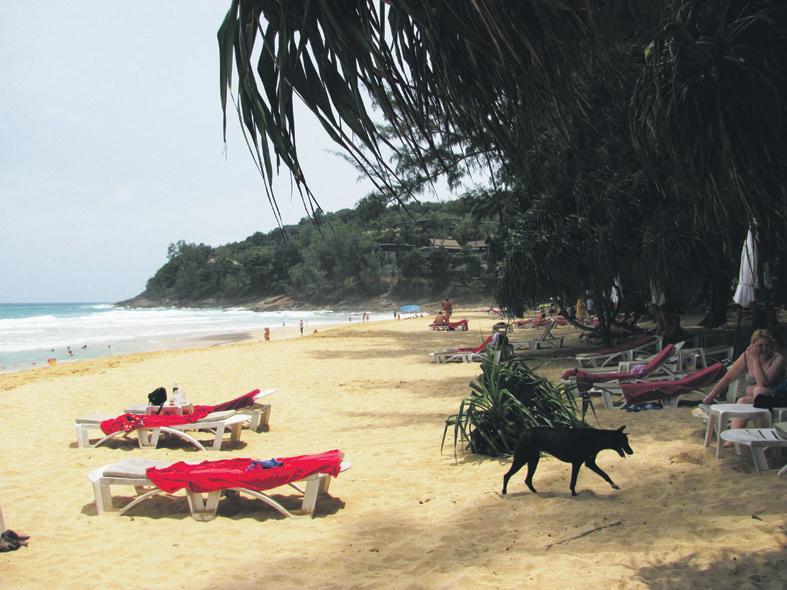
My excursions included elephant trekking through shallow streams and groves of rubber trees; visiting the Gibbon Rehabilitation Project, a nonprofit organisation that returns captured gibbons to their natural habitat; visiting the laid-back village of Rawai, near the island’s southern tip, known for its sea gypsies; and viewing artist’s enclave of talented local artists.
You can also go to nearby islands by long-tail boat or ferry. It was as I was disembarking from the Phi Phi Island ferry, that I unexpectedly saw Nicky and her girlfriends. Negotiating my way past Chinese tour groups, I caught up with her as she was about to depart in the hotel’s taxi. “Let’s catch up at the airport,” she said, and with that they were gone.
Phuket was one of the major trading routes between India and China, and an important trade centre for Indian, Malay, Arab and European traders seeking tin and rubber. The boom in tin mining at the beginning of the 19th century led to the construction of mansions and shop-houses with architectural features known as Sino-Portuguese, built by prosperous Chinese merchants from Singapore, Melaka and Penang.
Dazzling beaches, historic architecture and a variety of unusual entertainment form the pulse of this island
Phuket Town is slowly undergoing a transformation; the shop-houses and mansions are being carefully restored with quirky boutiques, cafes and arty boutique hotels, offering an eclectic mix of funky and chic.


Along Yaowarat, Krabi, Thalang and Dibuk Roads, and Soi Romanee you’ll find Chinese temples and shop houses with old wooden doors and shutters and Chinese fretwork carvings. At night, the food market becomes a lively food court with portable stalls and carts pulled up to the curb, and a sea of plastic tables and chairs that spill out onto the street. Tasty Thai and Chinese dishes include my favourite pad see ew, made of noodles, thick soy sauce and stir fried vegetables, green papaya salad, barbecued
Main pic: Naithon Beach


Clockwise from top left:
A wedding
Soi Romanee Shrine of Serene Light
Naiyang Beach
Thanon Dibuk, Phuket Town
Klang Temple Patong


pork buns, coconut curry, seafood and for dessert, sticky rice with mango. At Kopitiam Phuket, I enjoyed soaking up the atmosphere in a restaurant filled with memorabilia, old photos and antiques.
I spent several days exploring Phuket Town before departing for the airport. With a call to board my flight and no sign of Nicky, I handed a postcard of a Koala to airline staff, asking if they could pass it on to her. As I walked along the glass corridor, I caught a glimpse of her. On my return home, a message awaited me: A postcard, thanks! Next time, we really must catch up!
Jetstar (direct), Thai Airways International, Singapore Airlines, Malaysia Airlines and Air Asia all fly to Phuket. Watch for specials.
While there is an airport bus to Phuket Town, departures are infrequent. I’d recommend booking a transfer with your hotel and avoid an airport taxi. Public buses radiate to the beaches from Phuket Town but for getting between the beaches, tuk tuks and taxis are your only option. Agree on the fare beforehand.
Travellers are spoilt for choice with a multitude of resort hotels to suit all budgets and preferences for location. My daughter loved her stay at the vast Le Meridien near Karon, set on a private beach with a resident baby elephant, expansive landscaped grounds and huge pool. I stayed at the newly opened Pullman Phuket Arcadia, overlooking low key Naithon beach and convenient to the airport. Villas are spacious, elegant and beautifully appointed in muted tones, and dining options are first rate. With a well-equipped gym, kid’s club and spa, your stay will be restorative.
E: H7488-RE@Accor.com /www.pullmanphuketarcadia.com. In Phuket Town, there are many small boutique hotels. I liked The Memory at On On Hotel, dating back to 1929 and Phuket’s first hotel, now fully restored E: askme@thememoryhotel.com/www.thememoryhotel.com Even if you don’t stay here, at least spend a few hours strolling by the picturesque streets.
Kopitiam Phuket, 18 Thalang Road for great food in a restored shop house.
The Phuket Tourist Map and Phuket Town Treasure Map are useful. The Tourism Authority of Thailand at Level 20, 56 Pitt Street, Sydney.
T: (02) 9247-7549 has a plentiful supply of brochures and maps.
Phuket was one of the major trading routes between India and China, and an important trade centre for Indian, Malay, Arab and European traders seeking tin and rubber






It’s amazing how the concept of fatherhood has evolved in the last couple of decades
Dads are great, and it’s fantastic that kids nowadays have such a close bonding with their fathers, based not just on mutual and reciprocated affection, but that they also aspire to be like them – or not!
My TV remote randomly stopped on Channel 7, where Australia’s Got Talent was airing in all its pseudo-effervescent glory. After a pretty good display of pyrotechnics, an all-male performing group were asked what they do for a living. “I’m a house husband,” said one of them quite proudly, raising a spontaneous laugh from the judges and audience alike.
Which triggered the thought that there are in fact, a good number of house husbands who take on what has been traditionally perceived as the role of women – that of caretaker of the children and home. The trend is catching on, mainly in metros in India too, where couples with no support from extended family have to fend for themselves. Some husbands opt to stay at home, or work from home, with the wife’s earnings providing a regular income. The phenomenon is not at all uncommon within Australia, but less so within Asian communities. But for the few dads who do stay at home to change nappies and organise exciting

afternoon teas and playdates, they enjoy the experience and even more importantly, they do a good job at handling their domestic responsibilities, from cleaning to caring, to cooking mushy baby food and rainbow cake. It’s amazing how the concept of fatherhood has evolved in the last couple of decades.
As a child, my dad was pretty much hands on and he devoted a lot of his time to us kids. But things like the remit of schoolwork and ‘taking up’ lessons fell to my mum, who was adept at using a few imaginative threats to awaken our sluggish brain cells.
Parent-teacher meetings were his forte at my insistence, as he was a charming man and my teachers’ complaints were always mild in his presence. Among his numerous good qualities, was his sense of adventure which took us off the beaten track on holidays each year, exploring the best of India. His occasional forays into the kitchen were always met with enthusiasm by us kids, but not by the cook, who would have to explain why the stores of oil and ghee had mysteriously depleted.
Most fathers of friends when I was growing up were relatively the same – the main breadwinner, devout, kind, polite, somewhat distant, but always protective, instilling in us a sense of security. Some were strict, others were lenient, but all showed the same sense of pride in their children.
And although kids like myself were respectful and proud of our dads, the father who sported Elvis Presley sideburns, white flair pants and sang Hound Dog when mistakenly offered the microphone at the church social, was the ‘cool’ one.
Modern dads aren’t Elvis, but they are certainly cool. You can see them confidently casual in trainers and board shorts, equally adept at handling a child on a bike, another in the stroller, juggling drink bottles and mobile phones with casual nonchalance that leaves even seasoned mums gobsmacked. They deal with falls and bruises, dobbing and whingeing with practicality and a minimum of fuss. Hell, they even take doctor’s visits for needles and sniffles in their stride!
It’s amazing how much in sync dads nowadays are with their kids, in all aspects of their lives. When growing up, dads used to suddenly notice their kids when it came to year 10, when a good percentage ensured admission into an engineering college, which could then be boasted about within the community. Respectability was the watchword, and dads used to impress on kids the necessity of matching up to the neighbourhood children in achievements.
But now, dads seem to have a more casual approach to their interaction with their kids. They don’t mind getting dirty, having a
kick around with a soccer ball, or spending quality time together at the pool. They effectively disguise their trepidation when sitting in the passenger seat, when their enthusiastic teenagers are learning to drive the family car. They are more lenient and understanding about sleepovers, movie nights out and school formals, but they would probably be a tad suspicious about the Hummer stretch limo that their daughter’s date has hired to take her to that prom.
The trend of guiding their children’s decisions too, has taken a well-deserved hit. They would probably grit their teeth when the son of the family announces that he wants to become a hairdresser, but they wouldn’t react with a backhander and a feisty, “Pagal ho gaya kya? (Are you mad?) You’ll become a doctor, or else!!”
In fact, dads are fairly proud of their kids’ choices, even if they could be somewhat radical. One dad, a lover of soothing Indian classical music and a firm believer that Jagjit Singh should be made a saint, bravely accepted his son’s choice to take on the role of drummer in the school’s rock band. “At least it’s still music,” he explains, trying hard to convince himself, as much as me. It is an incongruous sight to see that young man sporting tatts of skulls, wearing torn jeans with studs in his ears, nose and upper lip, enjoying an evening
walk with his father, impeccably attired in crisp cream kurta-pyjamas and spotless trainers, hair neatly combed! But they have the best relationship, one based on trust and understanding, and that’s what really matters!
Dads are great, and it’s fantastic that kids nowadays have such a close bonding with their fathers, based not just on mutual and reciprocated affection, but that they also aspire to be like them – or not! My boys quarrel about who will ride Dad’s motorbike when they get older, and it’s still an unresolved argument. My cousin still steals her dad’s shirts when she runs out of options of what to wear (despite having a 2x2m walk-in wardrobe!)
A friend’s son has a go at his dad’s fondness for Bollywood movies, but he invariably settles down to watch them, “Just to let Dad know how bad they are,” he says.
A friend of mine once said, “Dads nowadays are alpha male and beta female!” and that does seem true.
So this Father’s Day, let’s celebrate dads in all their Shivalike avatars, for being what they are – great!

The concept of fatherhood has evolved, and it’s only gotten better

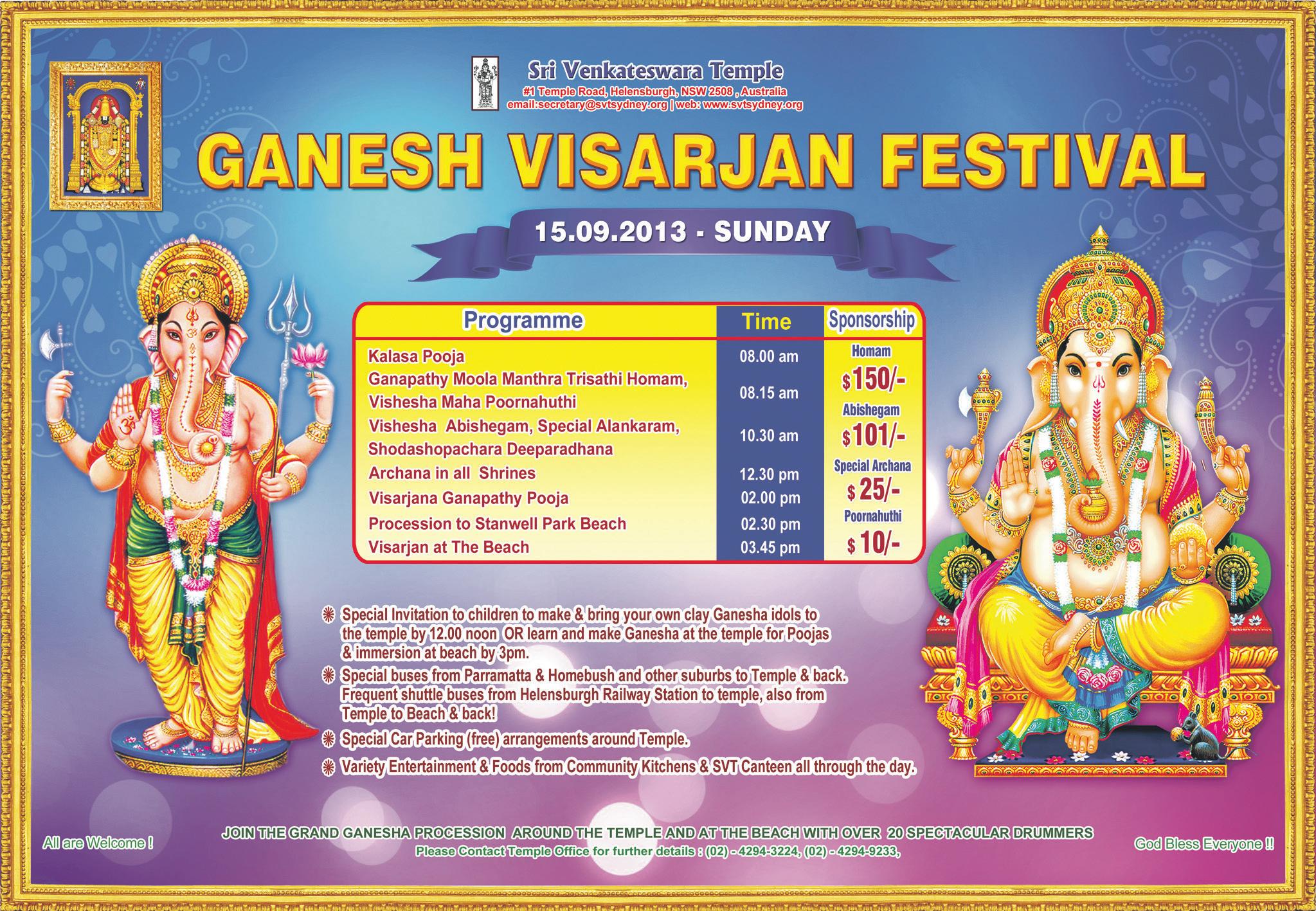



love admiring trends, but worry about how they will look on you?
Those were exactly my thoughts too, until I recently attended a Spring/ Summer fashion event. And ever since my head has been reeling with ideas!
I’ve always loved the concept of runway to real way. You’re probably thinking, “How does one actually wear the clothes showcased on the runway by those skinny models?!” Well, that is exactly what I love to do; interpreting runway inspired styling ideas for you and me. So here’s my take on Spring/Summer 2013, hot off the runway, and made all too easy to incorporate into your wardrobe.
If you are a fashionista, trend spotter or fashion blog reader you probably already know that this is a BIG one! So what’s new about this trend? If you are a believer in black being safe to hide your flaws and white is only for the slim figured, then I’d suggest you get ready to experiment a little. While black is certainly safe and reliable, white can be given a chance with free flowing material and interesting texture. Plus, it’s absolutely perfect for the upcoming warmer months. The way to rock this trend is to try black on black, or white on white, instead of just a standard white blouse with a black pencil skirt. Let me explain: try a black lace blouse with cream fitted pants and a black necklace (for black on black) or a white sheer dress, with white sandals and a striped clutch (for white on white). Other interesting ways to work this are black and white polka dots, or the evergreen black and white stripes and even variegated stripes.
Lounging on the deck with a lemonade is such a lovely interpretation of a spring day! It’s time to bring that refreshing touch to your wardrobe. Think lemon yellow, lime and tangerine. They look incredible when paired
with white, or even denim jeans. You could also add this colour to your accessory for the day. I’m talking bags, necklaces, bracelets, scarves or even bright flat sandals to contrast your pretty maxi dress. I’m a big fan of neon highlights and I recommend you add one tiny piece, such as studs or a bracelet, or even nail colour in a neon-ish green or yellow, just to make the look extra bright (if you’re in the mood for it).

Who says animal prints are only for Autumn/Winter? There is no such rule; the only rule is to pick a lighter hue, like leopard spots on a white background or reptile print or texture in a pastel shade. So this spring, wear your favourite animal print pants with a light colour top, dainty ankle strap sandals and a white bag and be ready to turn heads because you’ll not only look gorgeous but right on trend too! Another style tip for wearing animal prints is to keep the rest of the outfit subdued so you don’t go ‘over the top’ with it.



If you are thinking “spring equals floral” and wondering if that is a trend far too out of date, then don’t hold that thought! Florals as far as I can remember will never be out of date in spring. The unusual thing, which I find quite creative this season, is that the floral print will be far trendier on accessories, than clothes, with the exception of printed pants of course. Floral printed wedge heels, Aztec print scarves and delicate print bags are what you’ll notice around, so go and indulge in these. Try and balance printed accessories with plain tops, dresses and pastel blazers, or mix prints if you like; such as stripes and florals, or dots and zig zag prints.
Whether you love trends or you don’t really care, you just can’t ignore the sights around, enticing you to try something maybe just a little bit different.
So when you find yourself in that situation, you might think of this article and hopefully it will help you make a stylish decision for your spring wardrobe!
Add one tiny piece of neon such as studs or a bracelet, or even nail colour just to make the look extra bright (if you’re in the mood for it)
Floral printed wedge heels, Aztec print scarves and delicate print bags are what you’ll notice around, so go and indulge in these



Although the weather seems to be a bit confused, thinking that it was Spring a while back, it’s officially here. And what a beautiful start to it with plenty of sunshine.
This means it’s time to stop cooking heavy meals, and swap them for lighter, fresher, healthier options. It’s time to get the salads bowls back out, clean off the barbeque and put away the slow cooker.
Mango and prawn salad

It’s coming up to mango season (finally!) and when combined with prawns, you know that the warm weather is finally here. This is a quick and easy one. Perfect for throwing together after guests have arrived for a dinner party or taking on a picnic.
Serves 4
1kg uncooked large king prawns
1 fresh long red chilli, chopped
finely
2 tbsp light soy sauce
2 tsps sesame oil
2 tsps finely chopped fresh coriander root and stem mixture
2 cloves garlic, crushed
5g fresh ginger, grated
1 large mango, sliced thinly

1 large red capsicum, sliced thinly
1 Lebanese cucumber, sliced thinly
½ cup loosely packed fresh coriander leaves
2 green onions (green shallots), sliced thinly
Lime dressing
1/3 cup lime juice
2 tsp fish sauce
1 tbsp grated palm sugar
Devein and shell prawns, leaving tails on. Combine sauce, oil, chilli, coriander, ginger and garlic and prawns in a bowl, and chill in refrigerator.
For the dressing, combine all ingredients in a screw-top jar and shake well.
Cook prawns in a hot frying pan until they colour. Combine prawns with dressing and remaining ingredients in a salad bowl.
Asparagus all wrapped up
Serves 4
16 asparagus spears, trimmed
4 very thin slices prosciutto, cut in
half lengthwise
A pinch of salt
Freshly ground pepper to taste
1tsp extra-virgin olive oil
Toss asparagus with oil, salt and pepper in a medium bowl. Wrap

1 length of prosciutto around the middle of 4 asparagus spears if you want a bunch, and repeat.
Oil the grill rack. Grill the asparagus bundles, turning once or twice, until the asparagus is tender and charred in spots, about 10 minutes.
Pea and mint salad with
Serves 4
2 medium red radishes, sliced thinly
1 medium red apple, sliced thinly
½ cup (80g) shelled fresh peas

1 small radicchio, leaves separated
5 small pale celery stalks, sliced
thinly
½ cup loosely packed young celery
leaves
1 small frisee lettuce , trimmed
½ cup loosely packed fresh mint

leaves
220g goat’s cheese, sliced
Honey mustard dressing
1 tsp wholegrain mustard
1 tbsp olive oil
1 tblsp honey
1 tblsp lemon juice
Salt and freshly ground black pepper to taste
Boil or microwave the peas until just tender. Drain, them and refresh under cold water, and drain again. Combine the peas with the remaining ingredients in a large bowl.
Combine all of the honey mustard dressing ingredients in a screwtop jar and shake well. Just before

serving, drizzle the honey mustard dressing over ingredients and lightly toss.
For an extra in season touch to any meal, add some edible flowers. For a salad you could use nasturtiums, and for a dessert, try a sprinkle of pansies. Just remember that pansies’ pistils and stamens must be removed prior to being eaten. There are plenty of other options, but these two are easy to add to a meal.
Contact Details:


Amrit P Jagota (MARN 0532014)
Mobile Contact Number 0414 338 423
Manvinder K Josan (MARN 0962796)
Mobile Contact Number 0410 719 375
Suite 4, Level 1, Murray Arcade 127-133 Burwood Road, Burwood NSW 2134
Phone: (02) 9747 6071 Fax (02) 9747 4031

Seeking suitable match for fair and young looking Hindu lady, 5’ 2”, 55, divorced, vegetarian, Australian citizen. He must be a non-smoker, ideally aged between 50 and 60. Please contact: 0449 623 316 or email: alpine_rhapsody@hotmail.com
Hindu/ Arora parents settled in Sydney invite proposals for their beautiful daughter, 35-year-old, 5’6” who is divorced with no issues. She is a food scientist in the USA, planning to move to Australia, visiting in October. Seeking alliance from a welleducated and well to do Punjabi job settled in Australia. Please contact (m) 0426 718 962, or email: gnapril13@gmail.com

Seeking a suitable match. Currently pharmacist in UK, (but would prefer to settle down in Australia). Born May 1979 (UK citizen), and is also an Australian permanent resident. 5’ 7”, slim, vegetarian, Hindu Punjabi khatri. Father - retired, mother - retired, one brother (all in UK) and one sister (married and settled in Australia). Contact: redvanilla101@hotmail.com
Seeking suitable match for 36-year-old, who works for a multinational company in a senior position (chartered accountant), and values both Indian and western culture. Seeking Hindu professional man, preferably from a well settled family background. Please contact: ganesh2011v@gmail.com
Seeking bride for 37-year-old, 5’11’’ tall Melbourne based Hindu Agarwal boy. Working in IT. Caste no bar. Contact with bio data and pic at: desidownunder01@gmail.com or call/ text: 0416 164 651.
Fiji Indian male Hindu Australian Citizen in mid-forties invites correspondence from single or divorced Indian females (no kids) for marriage, and to settle in Melbourne. If interested please contact on: 0478 083 457 for further info.

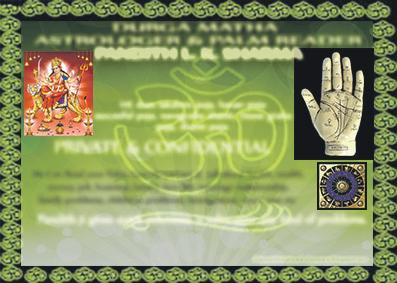

59-year-old, Sikh professional. 5’4” Canadian citizen, and permanent resident in Australia. Divorced 25 years ago, and looking for a lady to share life with. Contact: 0410 428 791.
Seeking a suitable match, currently test analyst in UK, (but would prefer to settle down in Australia). Born May 1975 UK (citizen). Australia (permanent resident), 6ft. Hindu Punjabi khatri. Father - retired, mother - retired, two sisters (younger in UK) and older sister (married and settled in Australia). Contact: redvanilla101@hotmail.com



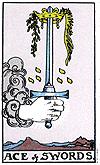




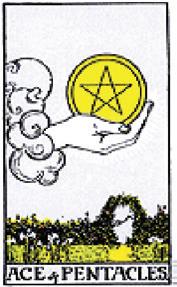



This is a month of social indulgence and making time for special friends. Take care of your limbs, try not to pull any muscles. Your love life is causing you some stress. Work will be demanding, but major changes will benefit you. You will be feeling a bit lethargic, but keep motivated towards a better work situation. Company cutbacks mean keeping on your toes. A pet may be feeling ill.
You will be feeling very positive, as finances will be stable. Expect an increase in income from another source. Friends may request you for money, politely decline as the loan will not be returned. You may have some stomach issues, so change your diet, cut out wheat and try a gluten free diet. Family and communication will be important. Someone living in another country will cause concern, call them.
GEMINI May 21 - June 20
It’s time for social activities, parties and entertaining. There may be a new job offer or promotion. Debts and bills need to be settled so keep your accounts updated. You may think of a short holiday soon. Your lower back may cause some problems, maybe related to an old injury. Electric items may need attention. You are surrounded by white, guided by protection from a relative who has passed over.
It’s a time of love and romance. Make a commitment to someone you have liked for some time now. Don’t rush into buying, despite wanting new things for your home. Work is positive with a greater interest in social activities and workshops. Expansion and stability is paramount, as well as future investments and property. Your spouse may be unwell, give them rest and support.
You will have increased expenses, so do not overspend and control outgoings. Take care when using the stairs. You may think of taking up some creative activity like writing or painting, now is the time to let your creative juices run wild. Work will be steady; if looking for work, a recent meeting will have a positive outcome. Certain people have not communicated well with you which has been upsetting.
You will be uneasy and restless, with disturbed sleeping patterns. Try to relax before bedtime. Be careful when dealing with relatives in difficult situations and discussions. Take care on the road, people may be careless. There is some confusion and doubt about the future. You are not feeling secure and stable. Financially you want to save more money, but are a bit disorganised and lazy. Look after an old relative who is ill.
You may have a stressful month, with a chance of splitting up with a longtime close friend. You are thinking about how to increase your finances. Try and relax, take up meditation if very stressed, but you will get through. You overreact and get upset quickly, keep cool and calm. You will think about buying new clothes and changing your image, with a new hairstyle. Get involved in community social activities.
You will be feeling very energetic, charged and in control. You will make plans to start new ventures. Your investment in stocks and shares are not giving good returns. Put your cash elsewhere, take advice. Relationships are stressful, ease the situation by spending quality time together. If in an exercise regime, keep persisting even if you are not that motivated. Try to lose weight and keep healthy.
SAGITTARIuS nov 22 - dec 21
This is a great month for career advancement and new possibilities. You will travel and look at the possibility of a venture overseas. Financially you are saving, and that feels good. Spice up your love life with role playing and fantasy in the bedroom, as Saggis get bored quickly. Speak to your partner, as you feel they are not taking the initiative. You may start a new venture in the future, so make plans.

You will look at ways of increasing your income. You will feel healthy and relaxed, as health is good and you are trying to lose weight. This is a time for travelling and thinking of buying a house or maintaining your current home. There are exciting changes, so keep motivated. You tend to keep to yourself, as you have been betrayed lately by some good friends.
You will feel restless because of work pressure. Take care and get enough rest to handle demanding work projects. Take care when driving, especially if you drive a red car. News relating to a health test will be favourable. Spend time out with your family, and make time for yourself. You may be suffering from headaches, and stiffness around the neck. Someone abroad will be in touch.
You will take more of an interest in spirituality, meditation and chanting of some kind. You are stressed out, so relax your mind and body. Regular massages will be good. Relationships are on and off, decide what you really want. Keep finances in check and start saving as you have been overspending lately. Start exercising regularly, spend more time in the gym to keep your health in order.
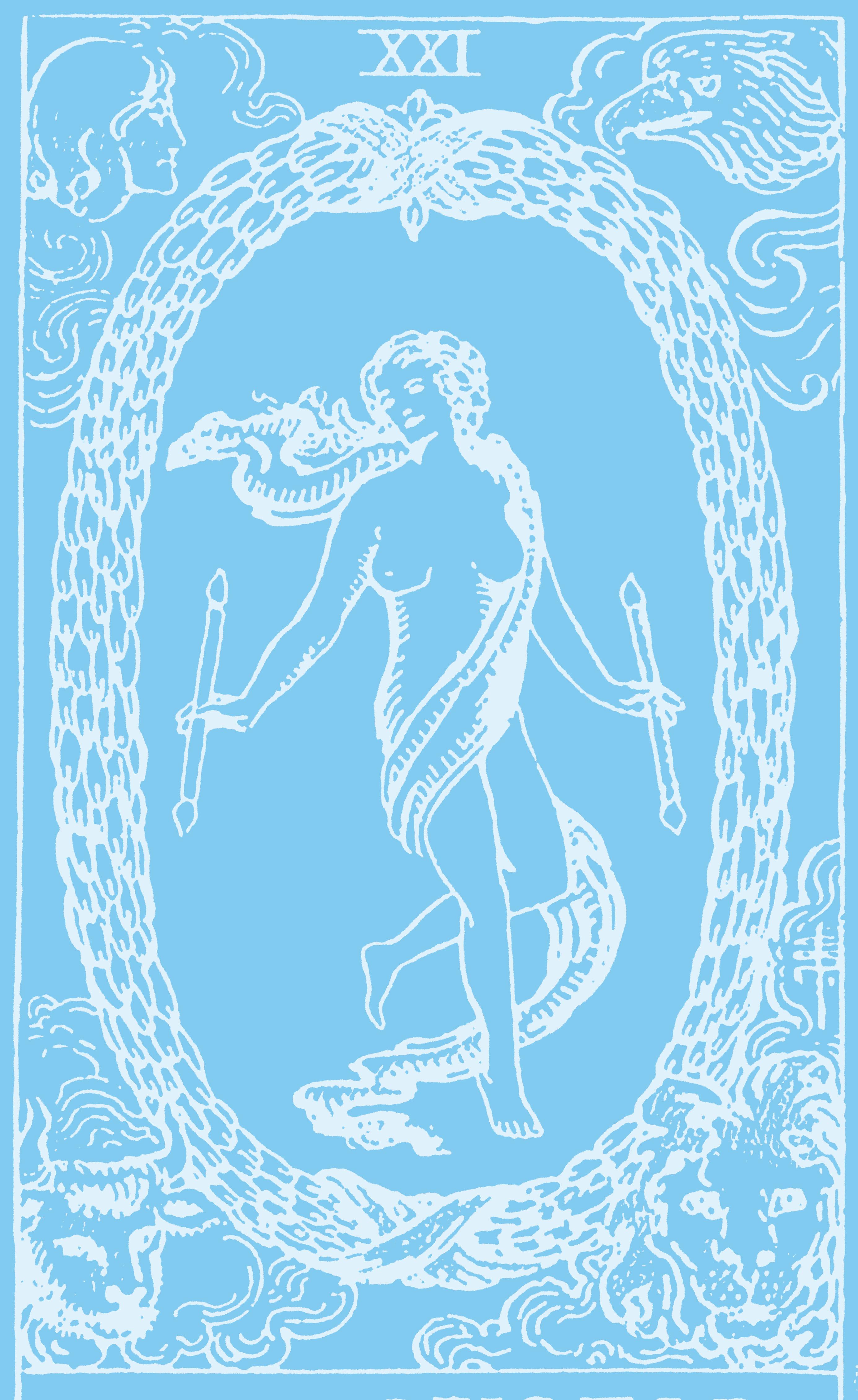
Actress Soha Ali Khan has been in the buzz lately for a number of reasons, one being for her role in the soon to be released comic movie, War Chhod Na Yaar. Soha has acted in films like Rang De Basanti, Khoya Khoya Chand and Soundtrack, but this role is a special one for her as the genre is lighter and also great fun.
“I am doing comedy for the first time and it has been great fun,” Soha stated recently. “I have done films where to get into a role, you have to bring back all these depressing memories before a shot. Comedy is much lighter, you can improvise, you can have fun, and you can let yourself go”.
War Chhod Na Yaar is a war comedy, and director Farz Haider’s maiden venture. Soha plays a war reporter in the film. “I really liked the subject and that’s why I said yes to Faraz. It was one of the best scripts I have ever read. We all want wars to stop and the most influential medium in India is films. Movies inspire us”, she said.
“Faraz has written a script through which he aims to change our mindset and show us what we can do to stop wars,” she added.
The movie also features Sharman Joshi and Javed Jaffrey.
In another film Calling Mr Joe B Carvalho, Soha will be seen beating up 20 people in her introduction scene, a temptation that proved simply irresistible to the actress.
“I got convinced in the first five minutes of the narration because I loved my introduction scene in the film,” said the 34-year-old actress. “I have always wanted to do some action because I believe I am very fit and I enjoy gymming and playing badminton and fighting”.
Soha plays a police inspector named Shantipriya Phadnis in the film and also learnt to do a cartwheel for her role.
Om Puri may be a versatile and talented actor, but his life off-screen isn’t all peaches and cream. His wife Nandita recently accused him of domestic violence, and he was finally granted bail to leave the country to shoot a film in the UK.
Naturally, Om heaved a sigh of relief, happy to get away for the professional assignment, the shooting of his new international film The Hundred-Foot Journey with the distinguished British actress Helen Mirren. Being granted bail brought an end to a week-long drama in Om Puri’s life when his aggrieved wife Nandita accused him of domestic violence. However, Nandita was insistent that Om not be allowed to leave the country for his shooting. “Luckily for me the legal system in our country is rational. Yes, I am able to leave for my shooting, albeit one day late,” said Om Puri, who has to provide a surety bond of Rs.15,000 before he leaves the country.
“I can’t tell you how much I’m looking forward to getting away from the nightmare of my life in India. I promise you I am going to do well in The Hundred-Foot Journey,” said the beleaguered actor. Naturally, that’s but to be expected from a professional like Om. But whether he’ll do well in his personal life may turn out to be yet another story!
“Shantipriya Phadnis is not a normal cop. She is very good at her job but there is a huge amount of humour and comic element to it. But yes, I did take four kickboxing classes and I learnt how to do a cartwheel which I had never done before in my life,” Soha said.
Directed by Samir Tewari, Calling Mr. Joe B Carvalho stars Arshad Warsi in the title role, with Javed Jaffrey, Vijay Raaz, Shakti Kapoor, Geeta Basra, Vrajesh Hirjee and Himani Shivpuri also in the cast.
But that’s not all from the Soha front. The actress has admitted to eyeing her mother, veteran film actress Sharmila Tagore’s ‘beautiful’ jewellery. Soha is waiting to get some bespoke pieces of jewellery saying, “Amma (my mother) has gifted me a lot of it, which hasn’t reached me yet. She says, ‘This one is yours and this one’, and I know that I will get it one day,” said Soha recently when attending a high-end jewellery exhibition. “But I borrow a lot of jewellery from her and
she has some beautiful things. One special piece are the ruby earrings which are apparently mine and those are my favourite,” she added.
Soha, who belongs to a royal family, being the daughter of late Nawab of Pataudi Mansoor Ali Khan, says she never felt the need to buy jewellery pieces.
“I am lucky that I have got a lot, so I have never had the need to buy anything because I don’t know if I would be able to afford it myself. But Amma has a lot of jewellery, our grandmothers collected a lot of it through the ages and that too, very different,” Soha said. “From Bengal traditional gold jewellery, from Bhopal that kind of mughal, polki and jadau... all of those are very beautiful”.
Life’s certainly busy for Soha with comedy, drama and jewellery - what a life, it’s too tough!
Bhatt
Acclaimed filmmaker Mahesh Bhatt, who has seen several ups and downs in his professional and personal life, says he is what he is today due to his failures. In his association of over three decades with the Indian film industry, Mahesh has made several thought-provoking films like Arth, Naam and Zakhm, which have struck the right chord with the audience.

The 64-year-old began his career in 1974, and he has come a long way by experimenting and helming new kinds of cinema, whether as a director or through his production banner Vishesh Films.

“So far my journey has been fascinating,” Mahesh said at the first look launch of the film Dil Pardesi Ho Gaya and its Indo-Pak based anthem, Dil ki udaan “Yes, ups and downs are there in life, but those failures and downs polish you and make you. Whatever I am today, I am just because of my failures”.
“Failures give you strength to move forward. I would just say that when you
are going through failures in your life, don’t worry as those are your good times. But when you are successful, then you need to worry,” he added.
The filmmaker tasted real success with his 1982 film Arth, which was inspired by his personal life. Now Arth is soon going to be staged as a play. And the director continues enjoying his success...
Parineeti overweight?



You’ve got to be kidding me! But Parineeti Chopra thinks she is overweight. Parineeti says she is too big to don a bikini, although Bollywood actresses are readily flaunting the twopiece garment on screen. Asked if she will be okay wearing a bikini for a film, Parineeti said, “If I have a hot body, then why not? But right now I don’t have the right body. I am still overweight, so
there’s no way I can wear a bikini”.
As such, the vivacious actress doesn’t have any limitations or restrictions as an artist.
“I don’t know how long I will be in the business, or may be the audience will get bored of me and then I will not be around... so (as long as I am in showbiz), I don’t want to restrict myself,” she said.
Overweight, no; curvaceous, yes - but you can bet that Parineeti won’t be sporting a bikini in her upcoming film
Shuddh Desi Romance!
Money matters, says Manoj
Manoj Bajpayee, who has been acting for almost two decades, says that filmmakers should stop tempting him with good roles as now it’s money that matters to him the most.
“At this point of time, money is the most important factor for me. I am at a stage today where I can tell people, cast me in your film if you have the money.
It’s high time filmmakers stop tempting me with good roles and don’t pay me,” Manoj said recently with admirable candidness.
“This change in priority is because I have completed two decades in this industry and I have done enough to prove myself. I have a family to support. When I came into the industry, money didn’t matter to me. I was passionate about being an actor,” admitted the actor.
But the versatile actor is well-known for playing strong roles in movies like Satya, Raajneeti and Gangs of Wasseypur and the film-going audience is certainly quite impressed with his performances in a variety of roles. Manoj is now planning to focus on another area of filmdom, trying his hand at producing films. But in this case, he will not focus on money.
“I am getting into it because I want to promote good cinema. Whenever there will be a good script looking out for a producer, I’ll go ahead and produce it. Starting a production house isn’t a money-making business for me. I will be working for low-profit. I’ve waited all my life to see this time and now I am sick and tired of waiting at home for things to happen,” he said.
As producer or actor, let’s hope Manoj succeeds in bringing in the moolah. He’s earned it, don’t you think?

He might be just one film old, but actor Varun Dhawan knows the impact a movie character can have on fans. The young actor has urged his fans not to copy him when he smokes on screen. “Hey guys, for the record I don’t smoke, but I might have to smoke for some upcoming role… everyone knows smoking is bad so don’t do it,” posted Varun on Twitter, as he was seen smoking in his debut film Student Of The Year
However, the actor feels it is not right to judge people because of their smoking habits, somewhat spoiling the effect of his tweet.
Freida Pinto or Lea Michelle in Valentino


Share your views with us on our Facebook page
Varun will soon be seen in father David Dhawan’s directorial project Main Tera Hero, the Hindi remake of Telugu movie Kandireega. So stay way from the smoking, everyone, like apna Varun!
What’s the chitchat here between Rekha and Rani? Send in your responses to win@indianlink.com.au and win a surprise prize

LAST ISSuE cAPTION cONTEST wINNING ENTRy
What’s the chitchat here between Naseeruddin Shah and Gulzar?
Naseer: I just want to go home and get out of these ridiculous shorts… Gulzar: I know what you mean!
 Nisha Patni Artarmon NSW
Nisha Patni Artarmon NSW
Nisha wins a free ticket to the new Hindi film Satyagraha
STArrIng: John Abraham, Nargis Fakhri and Raashi Khanna
DIrECTor: Shoojit Sircar HHHHH
If only history could be changed by art. Cinema is a powerful medium for socio-political expression and revolution. Alas, in India, entertainment engages all other aspects of life on celluloid.
But seriously, it’s time now to get off the Chennai Express and get into Madras Cafe for a cup of the compelling. We need a reality check. And we need to regain a sense of history in Bollywood cinema which seems lost in the hoary art of streetside tamasha, glorified and aggrandised by cinematics that are perceived to be the elixir of pop culture. It is time for mainstream entertainment to grow up. Heightened realism is a means to achieve a synthesis of fantasy and history in this deftly scripted semi-fictional account of the processes leading to Rajiv Gandhi’s tragic assassination in 1991.
The trenchant script, co-written by Somnath Dey and Shubendu Bhattacharya, attempts and succeeds in building the same spiral of pseudohistory that Oliver Stone built in JFK. I feel Indian politics, because of the country’s multi-culturism, is far more complex than its American or European counterpart. Our cinema tends to dilute, simplify and trivialise history because we are much too wary of and lazy about getting involved.
Not John Abraham. What a courageous
producer and actor John has proven himself to be! More of that later.
But first the plot.
Let me say right away, that to understand the enormity of the story told in Madras Cafe, the audience ought to be familiar with the violent history of the Sri Lankan civil war. But even if you don’t know that thousands of Tamilians died in the war of separatism, it is no sweat off the screenplay’s back.
Tucked away in the compelling creases of the plot is a terrific thriller about the assassination of a prime minister, who, let it be known, is not named in the film. Nor are the LTTE (Liberation Tigers of Tamil Eelam), Prabakaran and the other key players. But then this is India. Here, secrecy and stealth are the founding fathers of any political expose.
But you can’t escape the clutches of history’s tyranny. Sircar’s skilful weaving of fact and fiction leaves little room for scepticism. We know as we watch with helpless astonishment, that the ‘Prime Minister’ will die, that the hero in this case won’t be able to save him.

Such are the heroes in real life. Unsung, sizes smaller than life. John Abraham skips into the part of the RAW agent Vikram Singh with an ease and comfort of a natural-born secret agent.
If James Bond or for that matter Kabir Khan’s Tiger were to have any truck with real-life politics, they would have been as believably brave and as credibly heroic as John in this film.
Every actor seems to take a cue from the vast resources of authenticity at their disposal. Specially riveting is Prakash Belawade as John’s associate, who seems to drink hard to escape from the enormity of his compromise. Even
Nargis Fakhri, so selfconsciously affected as Ranbir Kapoor’s doomed soul-mate in Rockstar, nails her war correspondent’s part with her radiant presence. But I have a quibble with her character Jaya. Why does Jaya speak in English while Vikram answers in Hindi?
The linguistic puzzle never quite obstructs the devastating drama of war violence conspiracy and betrayal. These are dramatic points of political reckoning. And yet Sircar keeps the proceedings subdued and lowkey. It’s a miracle how Sircar’s narrative voice never gets shrill even when the occasion is so ripe for over-statement.
Much of the credit for the tonal correctness of the narrative must go to Kamaljeet Negi’s brilliantly unadorned cinematography, which locks in on stunning visuals of violence and espionage-related action without falling into the mistake of making the frames look prettier than the grim situation that they are meant to capture.
Sircar’s editor Chandrashekhar Prajapati imbues a documentary style to the footage. But the sense of cinematic expansiveness is retained in the way the camera moves through the characters’ restless lives, searching for positions of comfort in a situation laden with desperate anxiety.
There’s a whole lot of stifled drama in Madras Café. When a key character dies in the second-half, the tragedy is handled without fuss. John’s tight-lipped performance gives the film a sense of tragic grandeur. We constantly feel we are in a territory where drama has no place. The soundtrack is exceptionally honest. Shantanu Moitra’s background
music underscores every scene without hammering in the emotions.
Madras Cafe is a dark, deep and satisfying film about the politics of separatism. The film doesn’t take sides. If it is against anything, it is the culture of violence that nations often feed into neighbouring countries for their own gains. This film opens up the hitherto unexplored genre of political drama in Bollywood.

After Vicky Donor, we know Sircar is comfortable exploring innovative cinematic territory. Here, he tells an edgy disturbing provocative but rational and fair-minded story that takes mainstream Bolywood cinema kicking and screaming into a new horizon.
This is cinema signifying a comingof-age with unforgettable visuals and drama and a rousing mature careerdefining performance by its leading man.
Get off the train, baby. This is arguably the best political thriller that Bollywood has so far given us.
S UBHASH K. J HA
STArrIng: Amitabh Bachchan, Ajay Devgn, Kareena Kapoor, Arjun Rampal, Manoj Bajpayee, Amrita Rao
DIrECTor: Prakash Jha
HHHHH
Prakash Jha’s Satyagraha bears no thematic relation to any of his earlier political dramas. It is certainly not a sequel to his Raajneeti, as has been reported in some sections of the media. And yes, it is most certainly based on the movement that Anna Hazare started against corruption. To say that Bachchan’s character Dwarka Anand in Satyagraha, lovingly called Dadujee by one and all, and Dadujee’s turbulent relationship with the gogetting NRI-turned-Gandhian-nationalist
Maanav Raghvendra (Devgn) does not bear a resemblance to the Anna HazareArvind Kejriwal equation, would be plain blindness.
What Jha and his very astute and politically informed co-writer and longtime collaborator Anjum Rajabali have done, is to collect together the thematic threads of Anna Hazare’s mass anticorruption movement and weave it into a gripping, thoughtful, hard-hitting and inspirational drama which contains all the resonances of a newspaper headline, and wrap it up in the semantics of cinema with as little creative violence as possible even while addressing an inherently violent issue.
From the time Jha made his intensely political drama Damul, there has been a constant strife between the director’s personal political ideology and its rendition into cinematically interpreted language. Drama and emotions have always been Jha’s bete noire. In his predominantly brutal domain of interpersonal politics, the human drama
is played out austerely, often at the cost of squandering away the chance to draw the characters’ innerscape in an elaborately-charted schema.
In Jha’s Aarakshan, we had seen that trademark emotional austerity in the way he portrayed Bachchan’s relationship with his screen-daughter Deepika Padukone. In Satyagraha, one feels the relationship between Bachchan’s character and his widowed daughter-in-law (Amrita Rao) could have gone a little further. But then Bachchan is the kind of extraordinary actor who can say so much about his character’s emotional environment in the most meagre playing-time. Here, he has that one moment with Amrita Rao when hearing her sob in the dead of the night, he goes into her room to console her... And we know the kind of deep bonding this powerful patriarch shares with his cruelly widowed bahu
There is little time for emotions in Jha’s world of politics and national awakening. Dwarka Anand gets just one sequence to show how much he misses his son.
It’s the moment when he returns to the scene of his son’s death. The father’s anguish here is palpable, throbbing with unexpressed grief. And then before we can wallow in the moment, Jha’s editor Santosh Mandal mercilessly tears us away from this poignant scene of a father’s loss.
In my favourite scene, Bachchan shares a son-like camaraderie with Devgn’s character telling him how he would miss Devgn when he leaves the next day. It is a deeply contemplative moment where Devgn reacts to Bachchan’s supple emotions with rare care and attention.
Hold on to these infrequent episodes of emotional expression in this turbulent tale of awakening the nation’s conscience where there is no room for individual’s self-indulgence. In
fact, Devgn’s growing fondness for the TV journalist Yasmin Ahmed (Kareena Kapoor, lighting up every frame) and the sudden burst of an acutely romantic song seems to belong to some other time-zone.
You see, there’s the business of the country’s future to be attended to. And who better at creating a cinema of sociopolitical reform than Prakash Jha? The director constantly wrenches away from personal feelings to focus on the broader picture.
Jha’s narration gets busy with the business of swooping down on huge crowds of anxious restless people looking for a way out of the country’s scam-frozen destiny. It’s a world built on the premise of socio-political reform that Mahatma Gandhi and Jayaprakash Narain dreamt of and Anna Hazare attempted to bring to fruition.
There’s an abundance of references to mobilisation of youth power through the Internet and mobile.
Satyagraha probes and questions the validity and motivation of any mass movement that is born out of an inividual’s genuine passion for reform. The pitfalls of such a mass movement are brought into play with a vinegary mixture of broad drama and subtle humour.
It is no coincidence that the film’s arch-villain is a politician portrayed as a kind of evil clown. Manoj Bajpayee plays the scummy ‘scammy’ brazenly corrupt politician with lip-smacking relish. His smirky villainous neta act works as a perfect foil to Bachchan’s controlled never-overdone messianic act.
Devgn, in the all-important role of the ambitious entrepreneur who becomes a catalyst for social change, could have taken his character much further down the road of self-articulation. On the other
hand, Arjun Rampal has limited scope as a goonda-turned-self-appointed youth leader. He has great fun sinking his teeth into the rustic accent and boorish body language.
While the three main actors play off each other with supple grandeur, some other supporting actors and characters are played at much too broad a pitch to be effective. When a corrupt policeman takes off his uniform to join the mass movement, you feel the script is teetering dangerously towards over-idealism.
But the message must be, and is, loud and clear. It is time for the nation to chase away damnation before it’s too late. Jha’s film is a timely warning, a massive clarion call for the conscience, brilliantly manifested in Prasoon Joshi’s title song which tells us enough is enough, and listen... getting Gandhian on the cancerous community of corrupt politicians is a symptom of cowardice.
Satyagraha conveys the uncontrollable anger and energy of a nation on the brink. For telling it like it is and for creating a compelling film out of the raw material of presentday corruption, the film deserves a standing ovation.
 S UBHASH K. J HA
S UBHASH K. J HA

For the last couple of months, Australians have been in the grip of election fever. Policies on the run, promises of financial aid to community organisations, claims to roll back controversial taxes, live debates, aggressive advertising – we are seeing it all.
While the scenario is quite busy and frenzied by local standards, I can’t help comparing it to election time back home. There are a few differences that are too big to ignore. Let me share them with you.
I miss the symbols
Australian politicians have parties with names – Labor, Liberals,
Greens, etc. While it is quite understandable, to me it lacks creativity.
Indian politicians are a creative and considerate lot. Taking into account their illiterate voters, they try to make it easy for them to remember which party to vote for. So they go for visual communication. From hand to flower, bicycle to torch, farmer to soldier, elephant to clock –almost every usable symbol has been employed by parties to ensure their ‘mind share’ among the electorate. Such imagery adds colour to campaigns, offers employment to artists and also makes it easy for parties to explain why they fail to deliver on their promises – eg. the flower was not in season, the bicycle had a flat tyre, the elephant ran away, etc.
Just two parties?
In Australia, it is a simple case of one or other. While it does make
choosing easier, to me it deprives us of the mental chaos that results from paying attention to 13 different mobs, each promising everything in general and nothing in particular. Processing all that information leads to many a drinking session during which we pretend to decide the future of the country. It gives employment to TV show presenters, generates revenue for media houses and improves voters’ memory. A yetto-be-done research study may reveal that any Indian who has been through five elections has little risk of Alzheimer’s disease. Like all others, this generous gesture by Indian politicians has been largely overlooked.
In Australia, we see a few billboards, or the local politician standing alone at train stations handing out flyers or at the most, the task force who politely
ambush you as you walk to the polling stations. All this may be nicely understated, but doesn’t quite cut it for me.
Where is the noise? I mean both visual and audio. The blaring loudspeakers that make you wish you could bomb each of them, the giant cut-outs that tower over people at all key landmarks and the rallies that comprise largely of extremely politically aware people who will shout any slogan as long as the rally is followed by a free lunch. Where are these attractions? Noise pollution, waste of tax payers’ money and traffic disruptions – when all this happens at the same time, you know the country is in the process of choosing a better government.
In Australia, people make a choice between two leaders to take their country forward. They may vote for the local candidate, but they are aware of the final outcome.
I think it is a bit like the ‘spoiler’ in a movie review. In India, we have no real idea of who will be the leader of the country, should our party win. The most important post is kept under wraps until the end. And in the end, the possibilities can range from a foreign born daughterin-law of the ruling family to her own daughter, or to a retired non-political economist with his best years behind him. In a crisis, we can also have a regional leader who is not known beyond his hometown or someone who ‘should be PM’ because he has been deputy PM for 21 years.
Australians will never know the joy of this suspense.
The differences are not only about the politicians, the voters are poles apart as well. In Australia, people look forward to casting their vote. They want it to count. A 101 year old woman called a radio station to check how she can cast her vote from home. A man from a small town of 16 people called to enquire about the nearest polling station.
I find this enthusiasm very unsettling.
Back home we listen to all the propaganda, have debates on the pros and cons of various parties and then leave it to truckloads of villagers to decide the future of the country. We blame the calibre of politicians, weather, traffic, time, lack of appropriate sunscreen lotion – everything
From hand to flower, bicycle to torch, farmer to soldier, elephant to clock – almost every usable symbol has been employed by parties to ensure their ‘mind share’ among the electorate

We blame the calibre of politicians, weather, traffic, time, lack of appropriate sunscreen lotion – everything is fair game as long as we can wriggle out of going out to cast our vote
is fair game as long as we can wriggle out of going out to cast our vote. We convince ourselves that one vote will make no difference and spread this silent vibe to all educated people. The result, easy victories for some and heavy defeats for others. We look at the results and wonder why that ‘good one’ lost the election. Must be someone else’s fault.
I hope there is enough for both countries to borrow from each other. Either the Australians can adopt our over-the-top-yetshallow approach to campaigning or we clean up our system to make elections a more sober affair. Or as a wishful aside, we may actually start voting.
symbols, a plethora of political parties, plenty of noise and a whole lot of excuses
